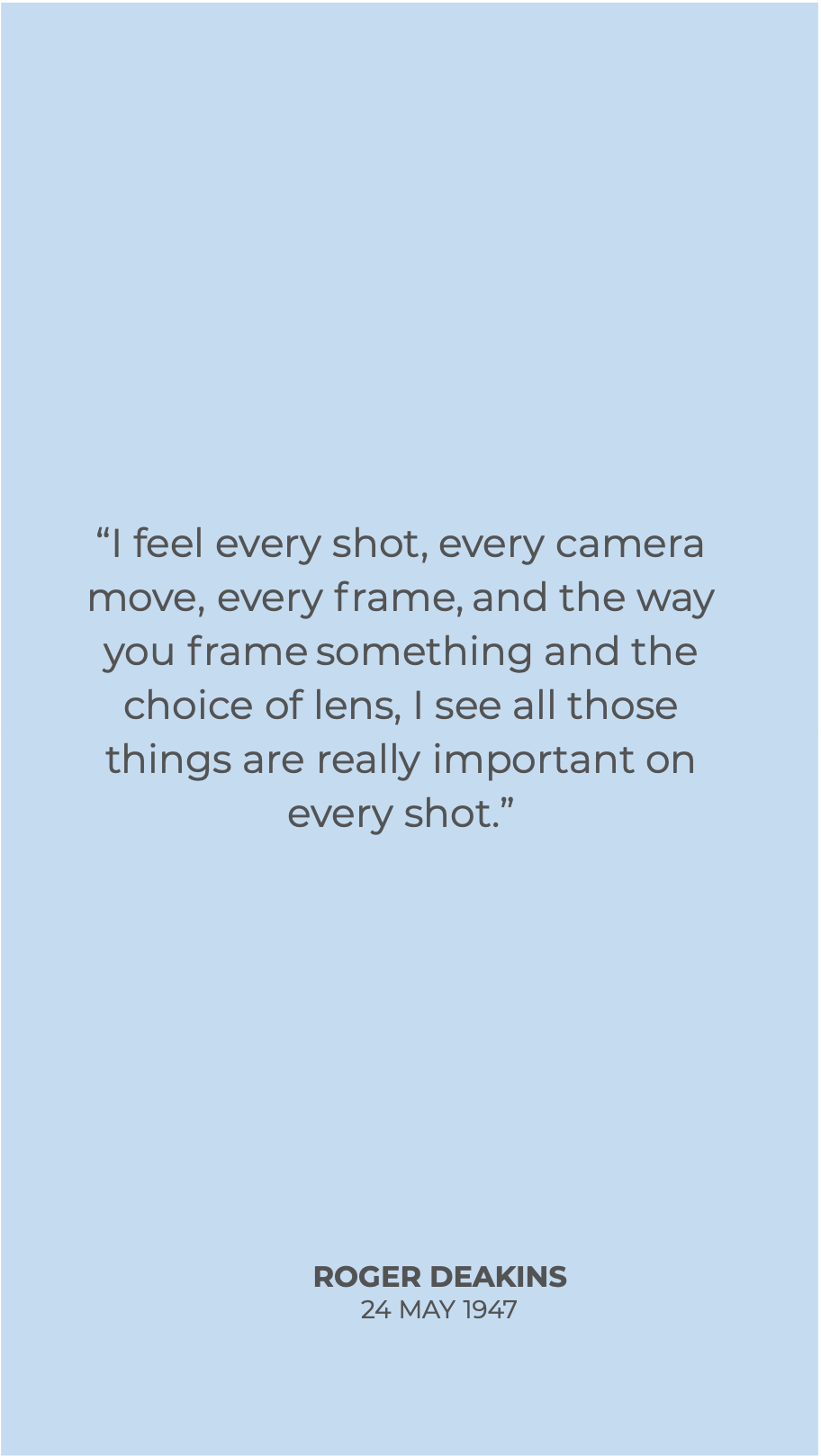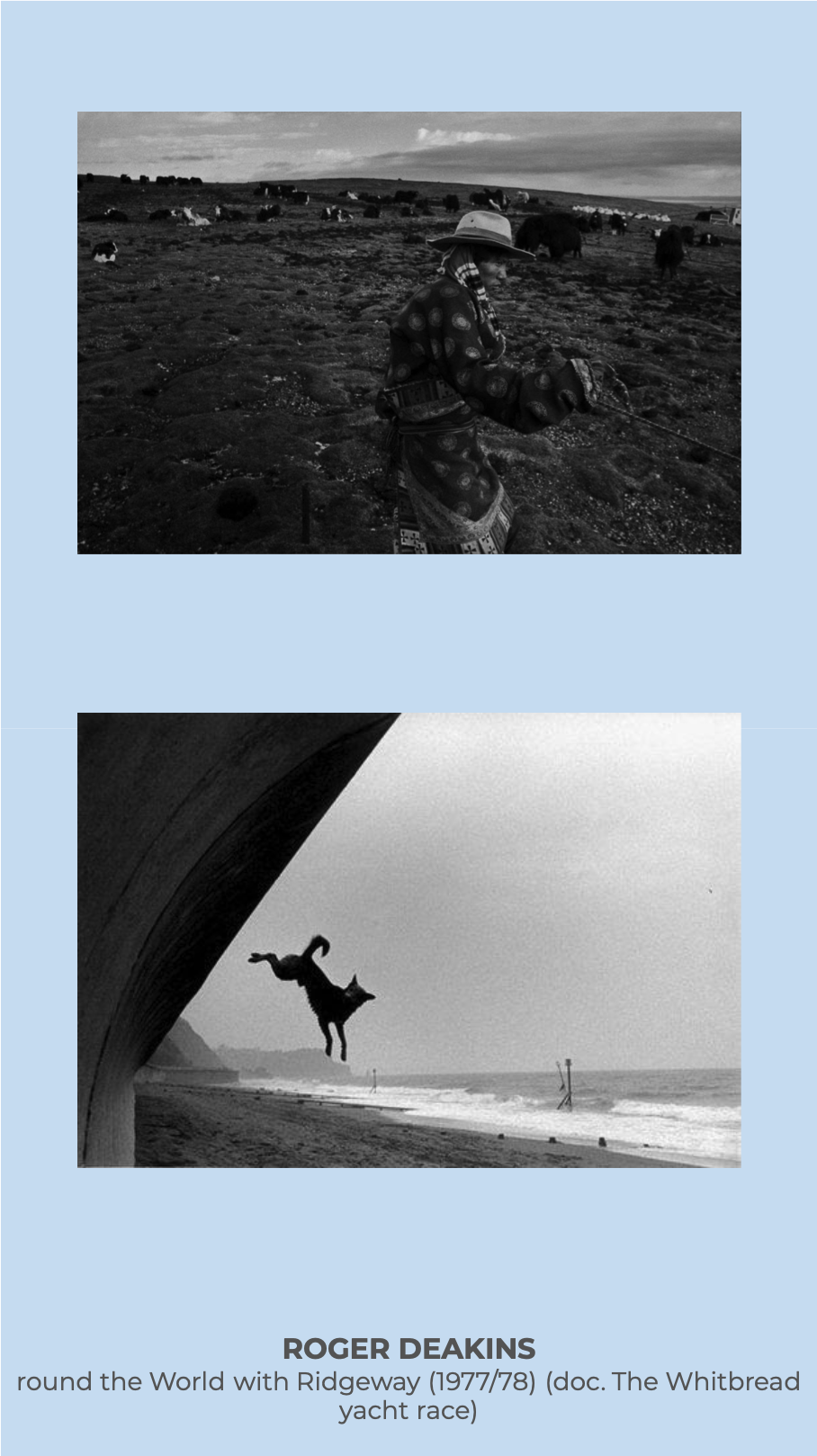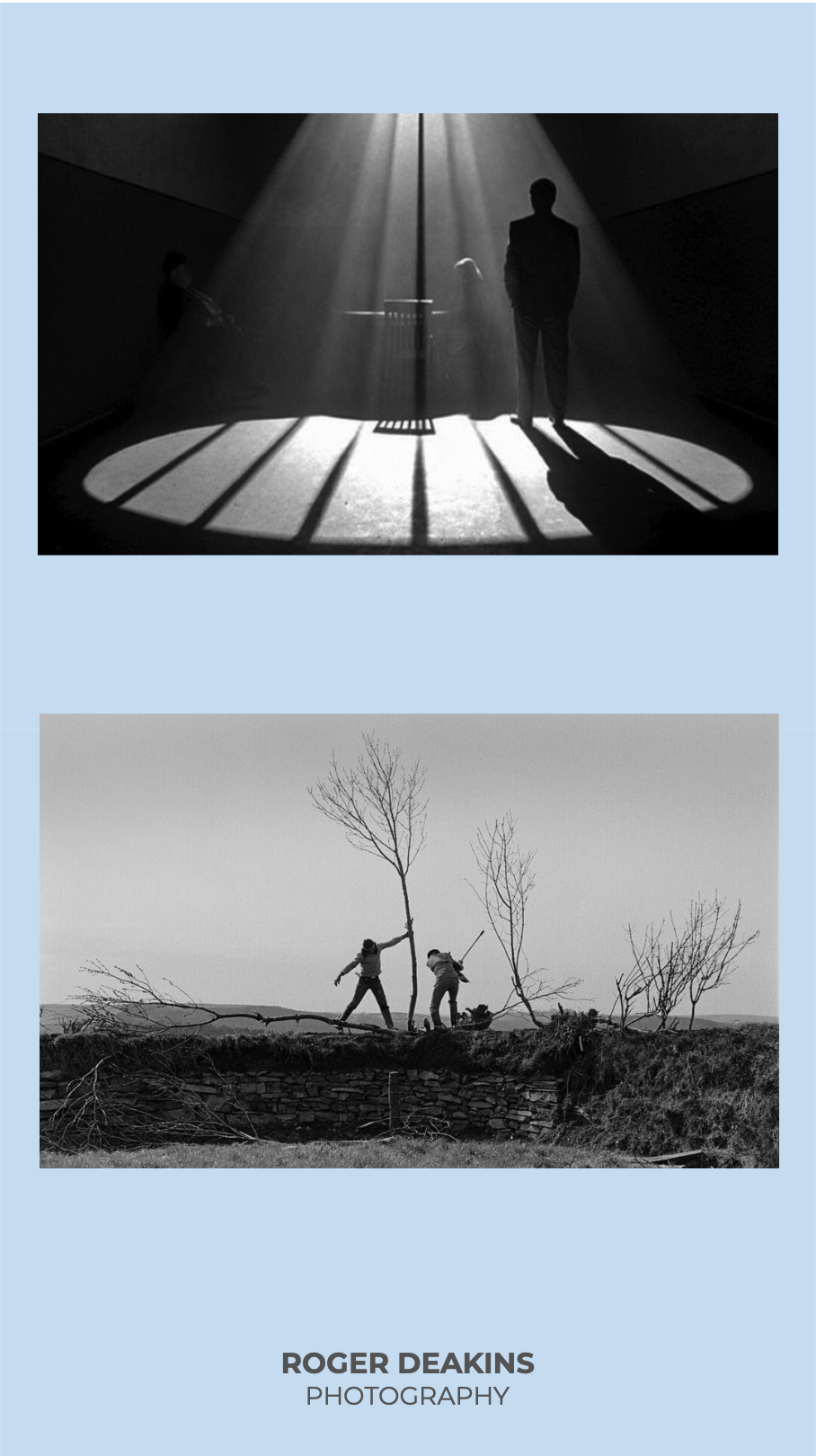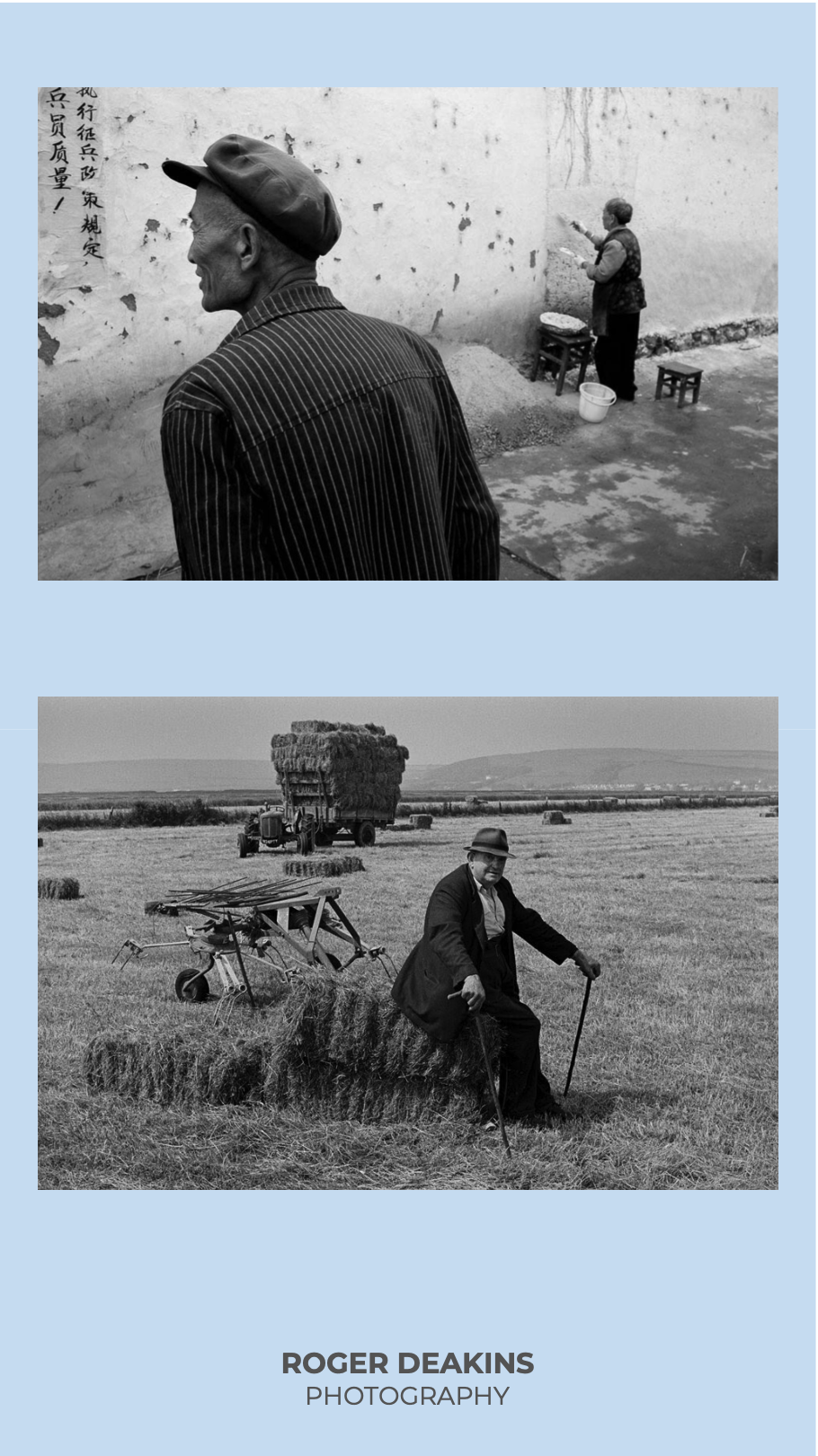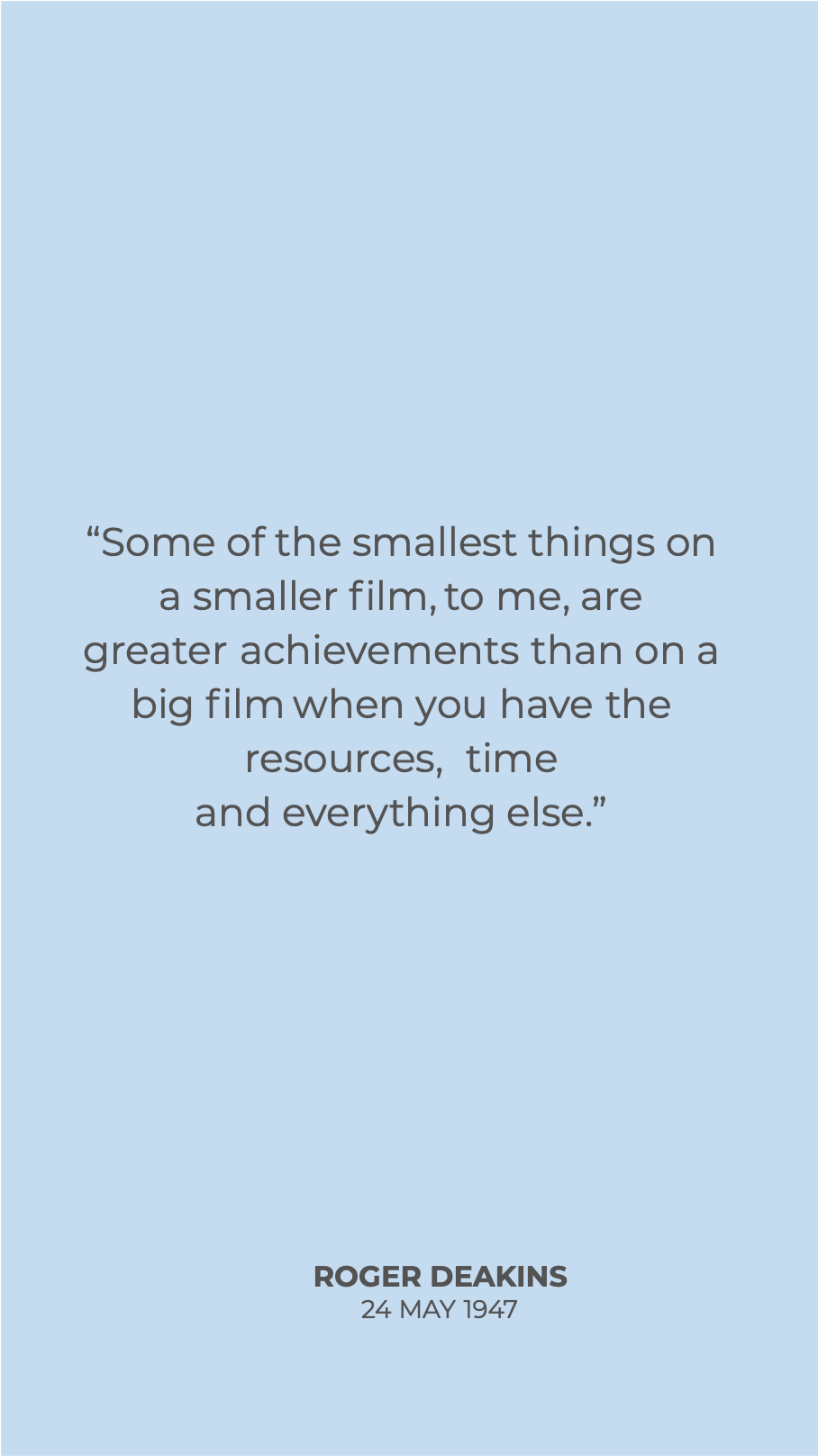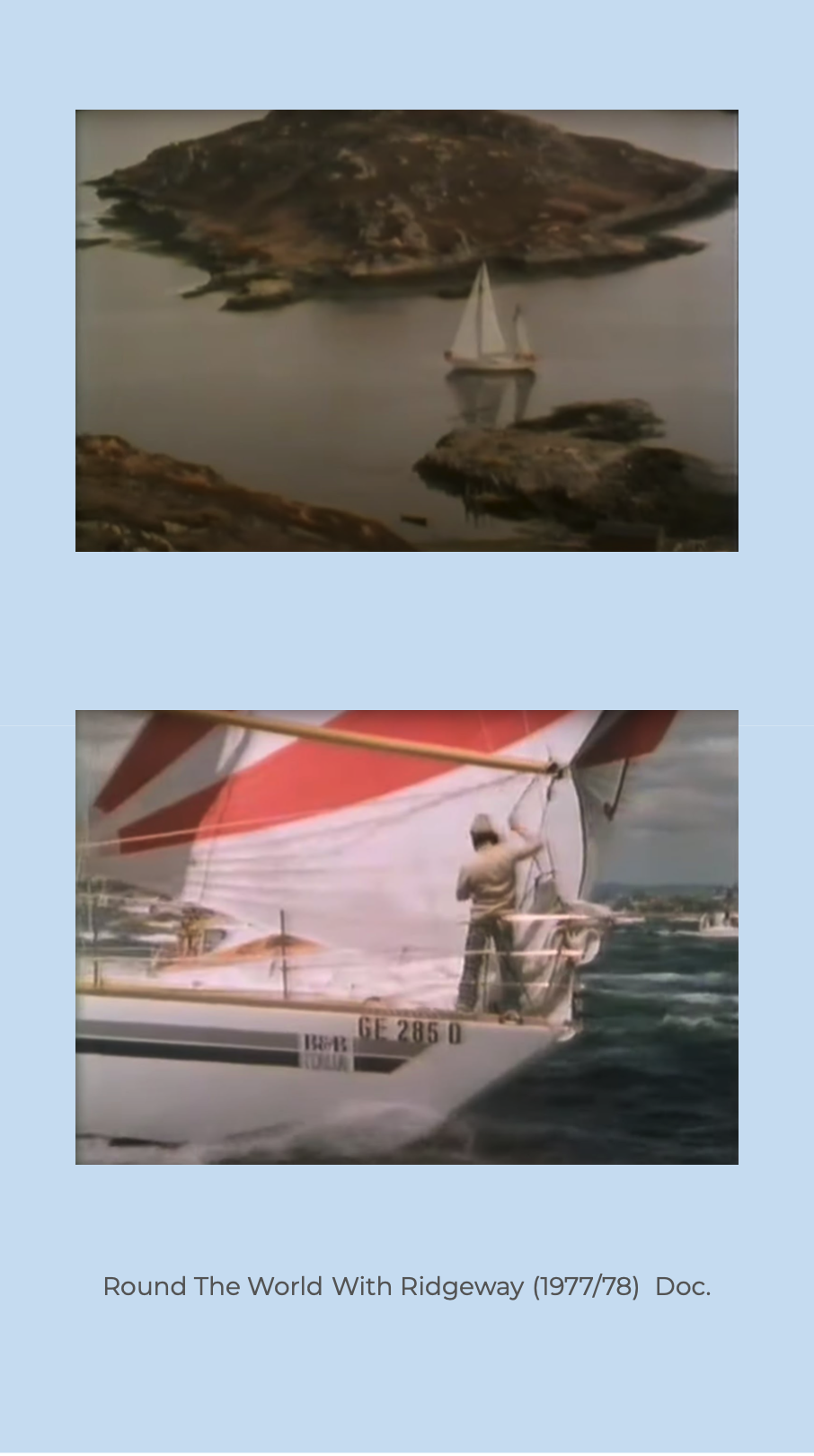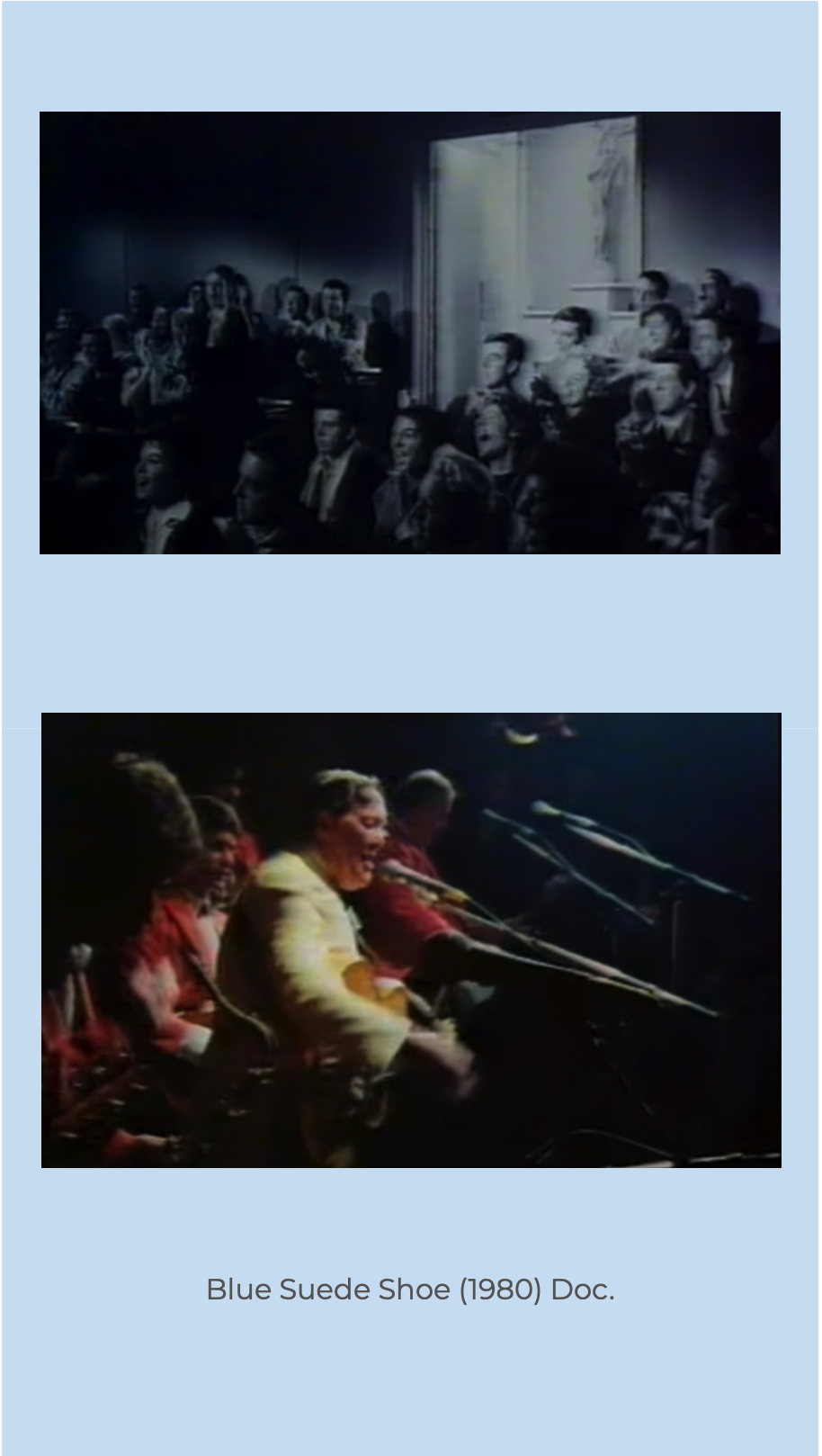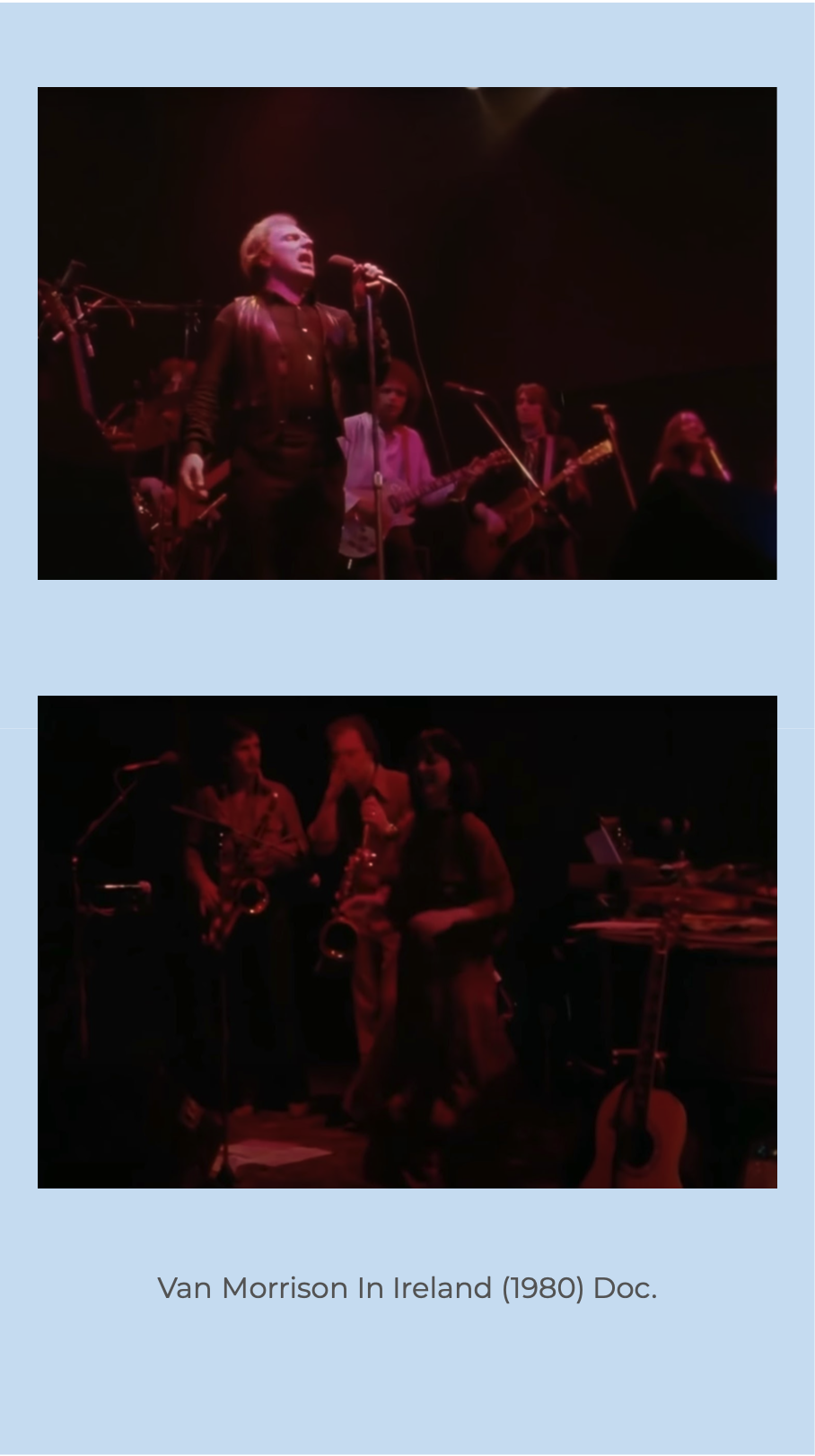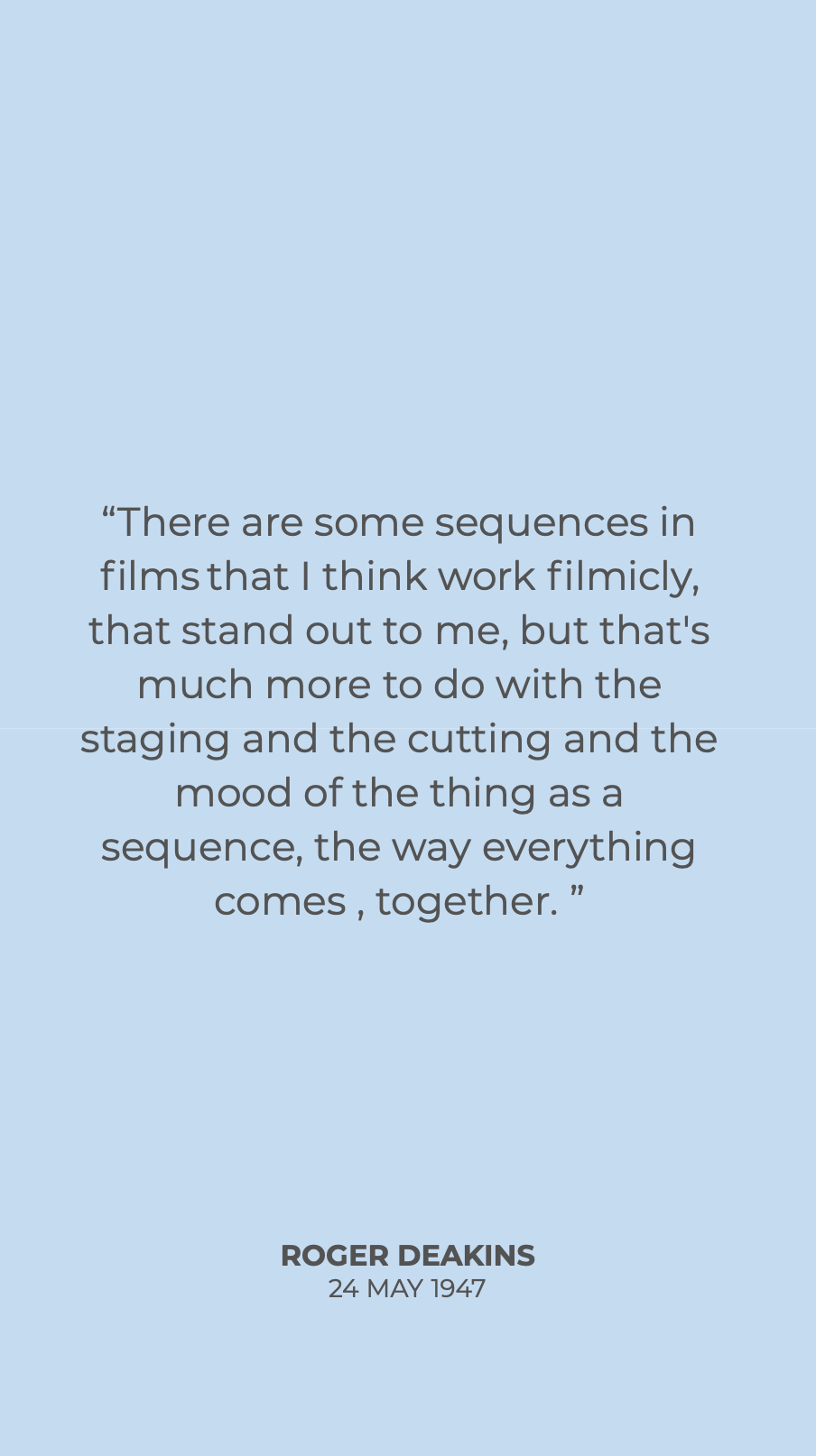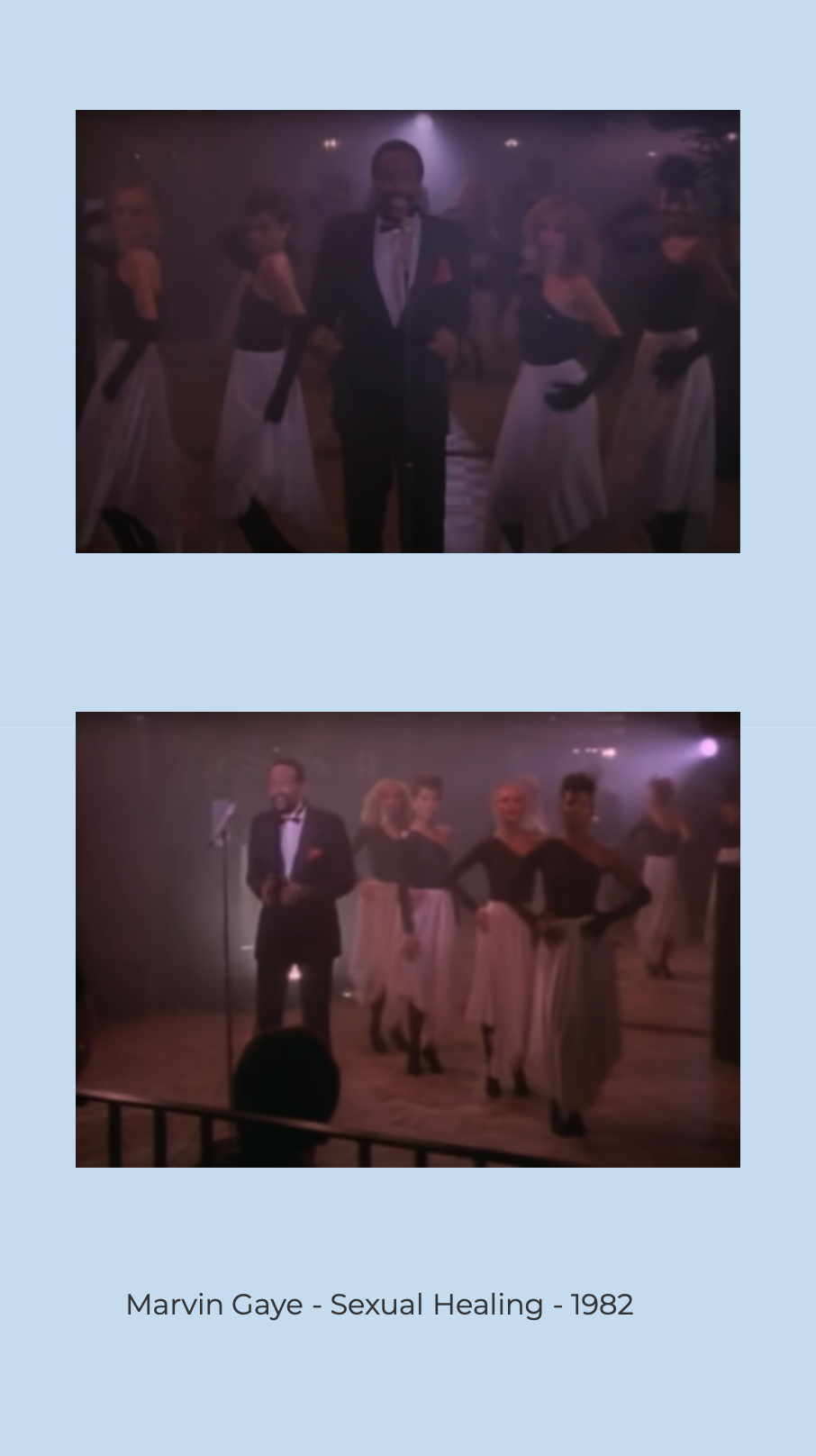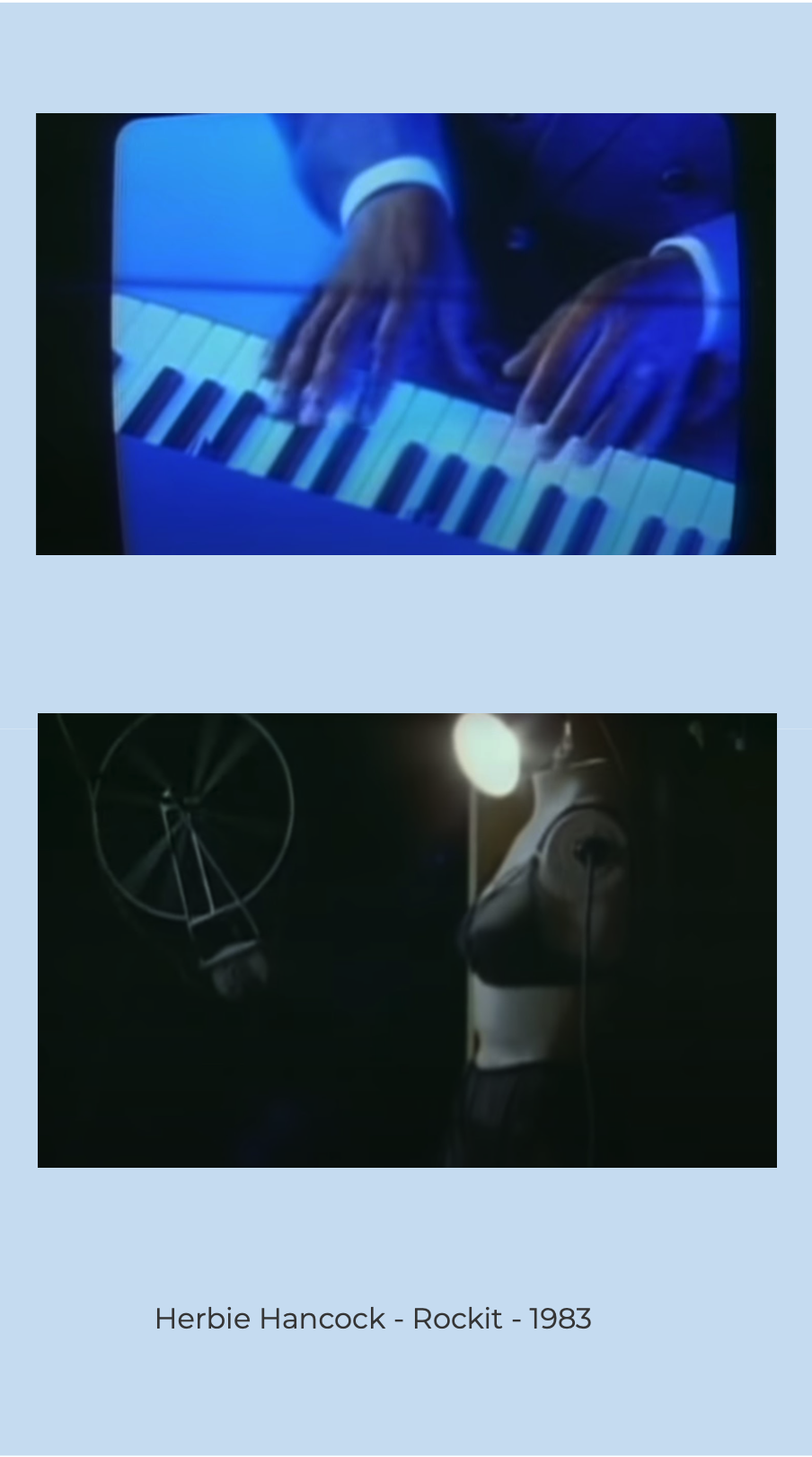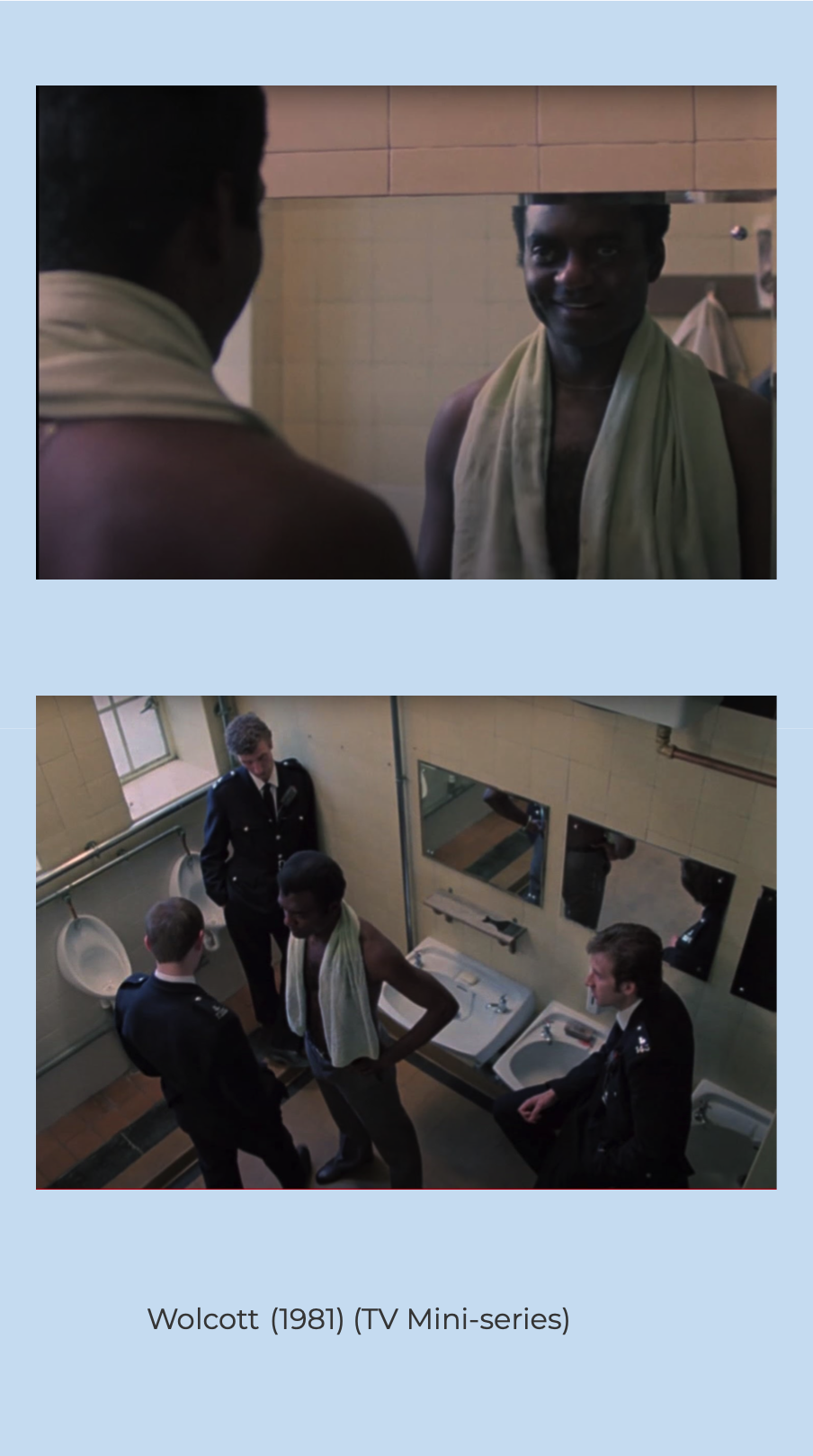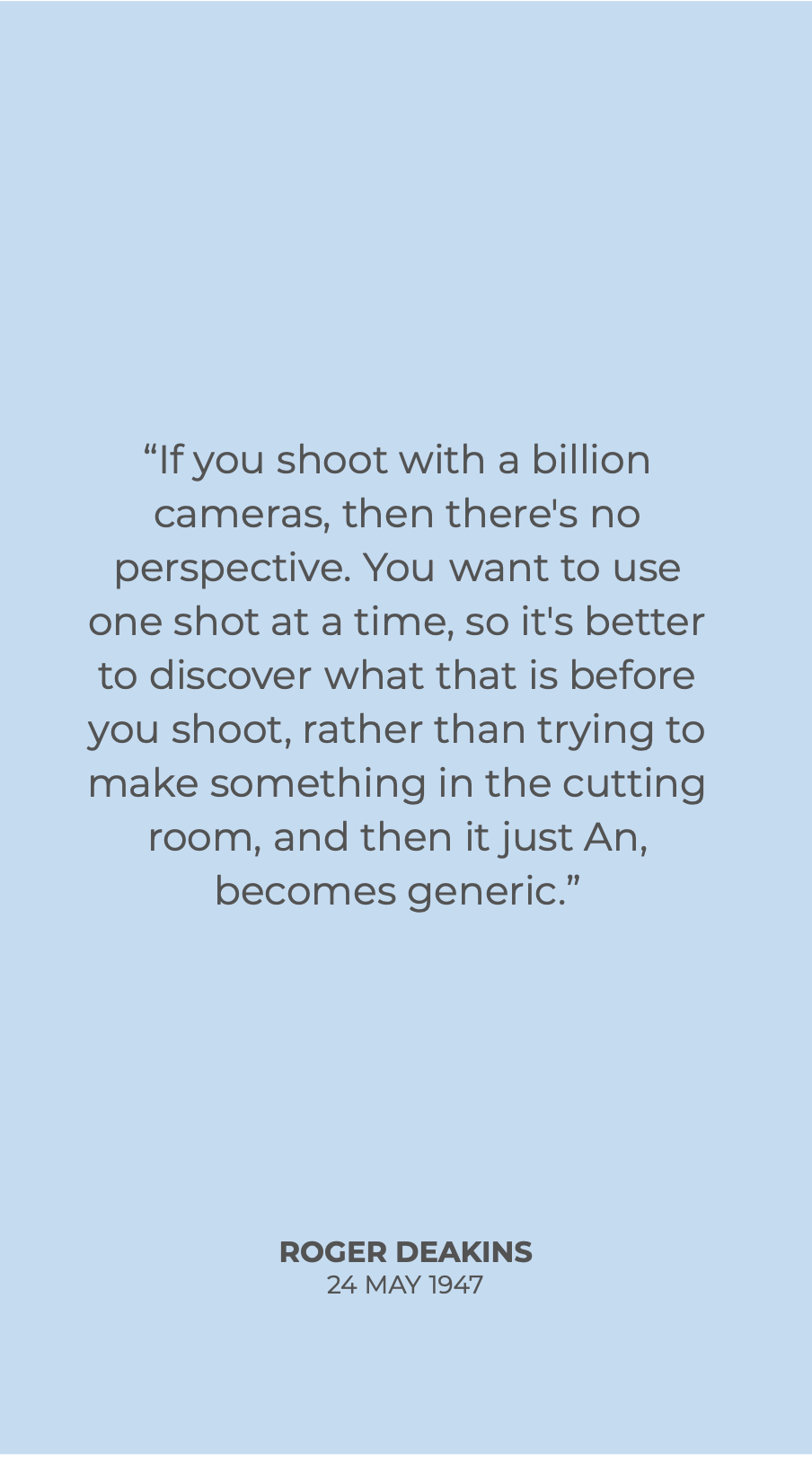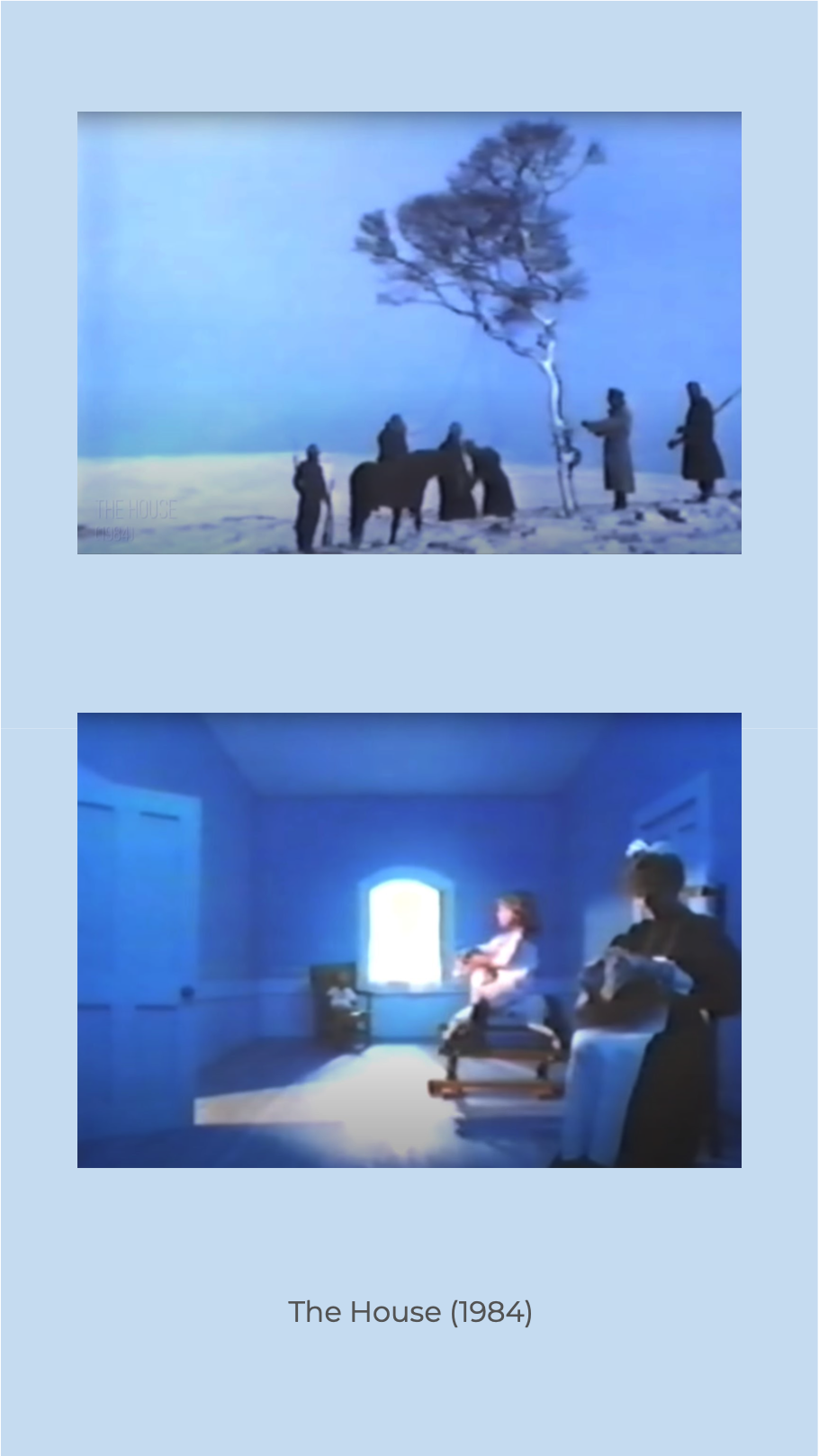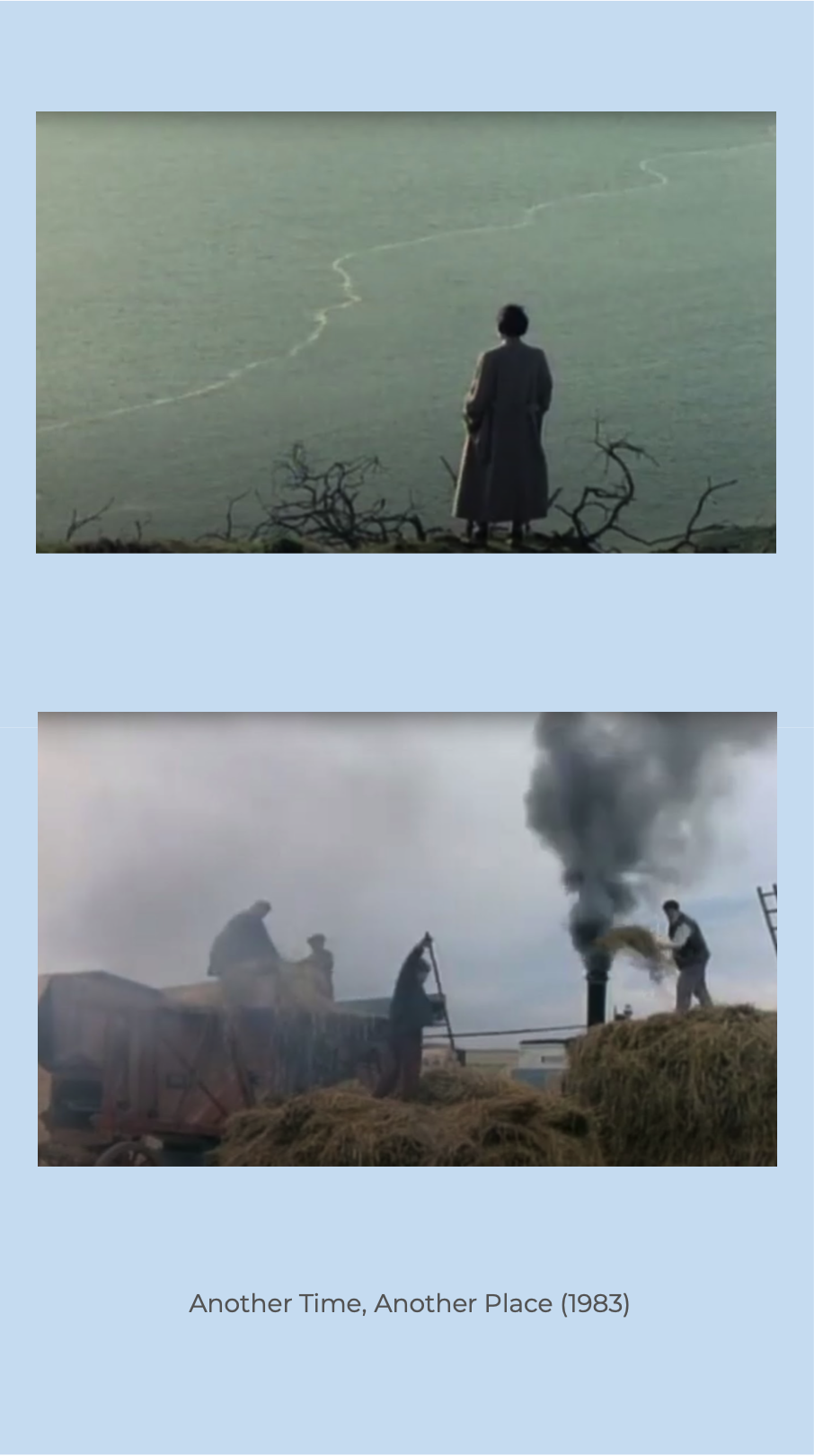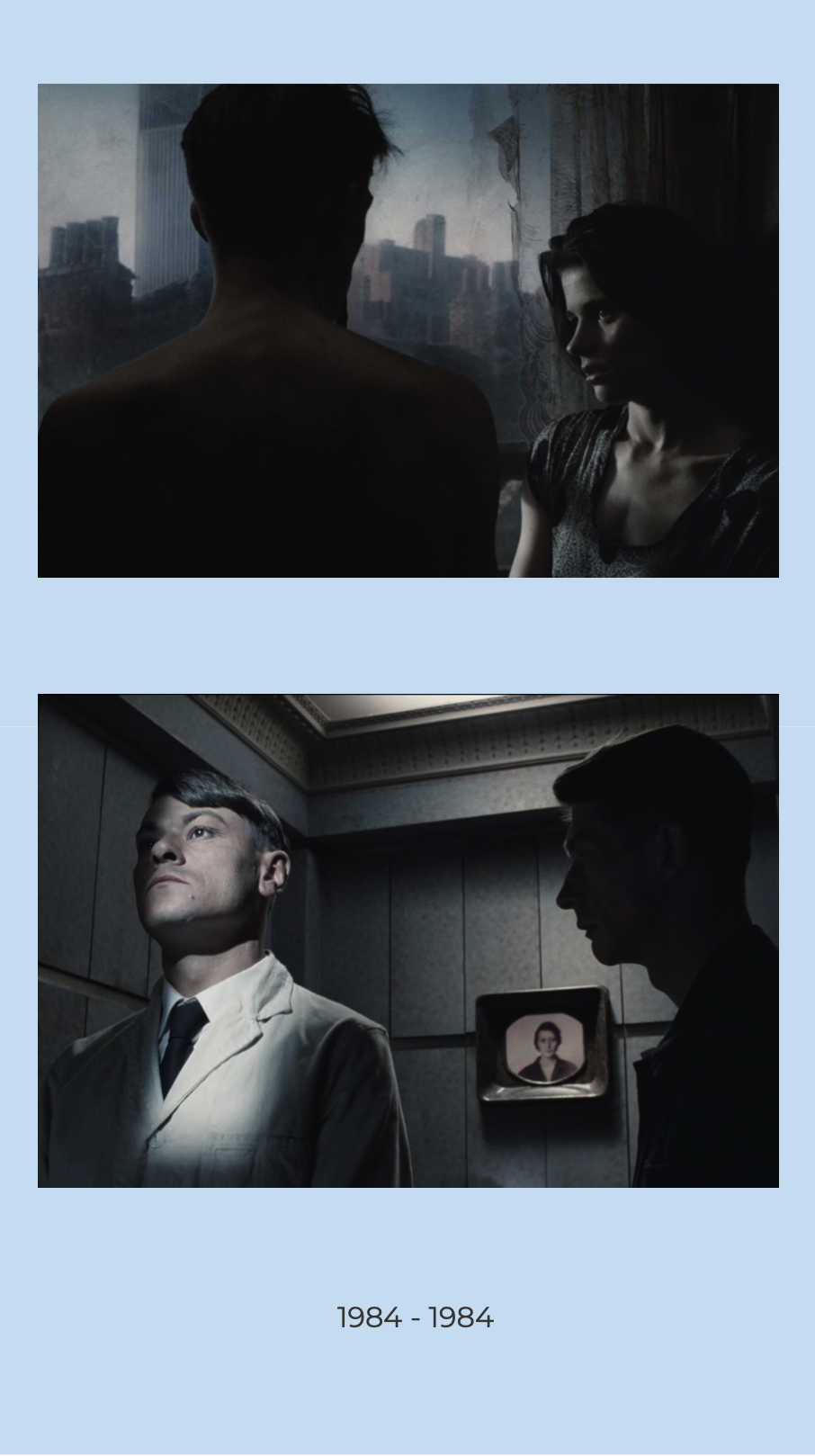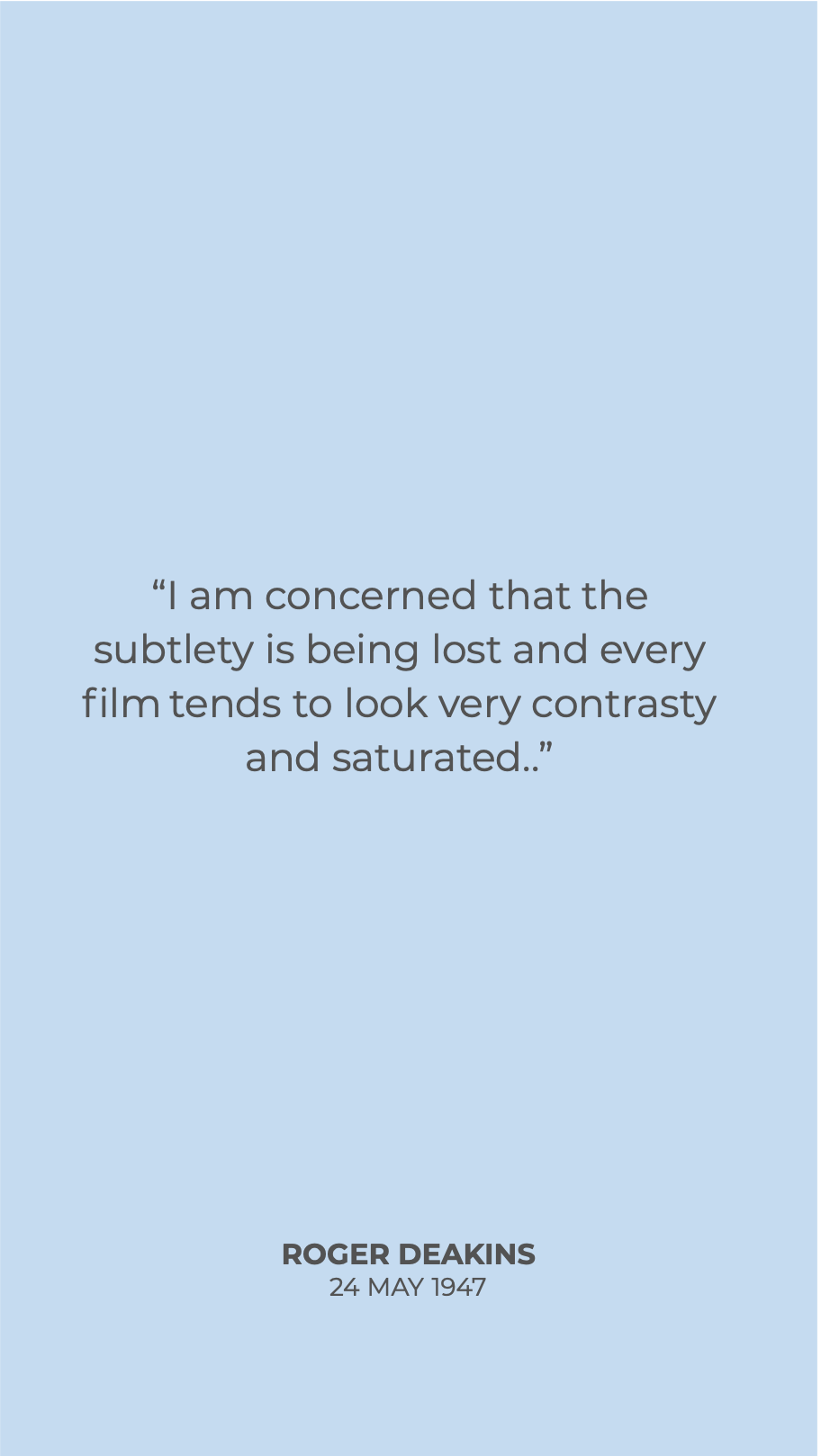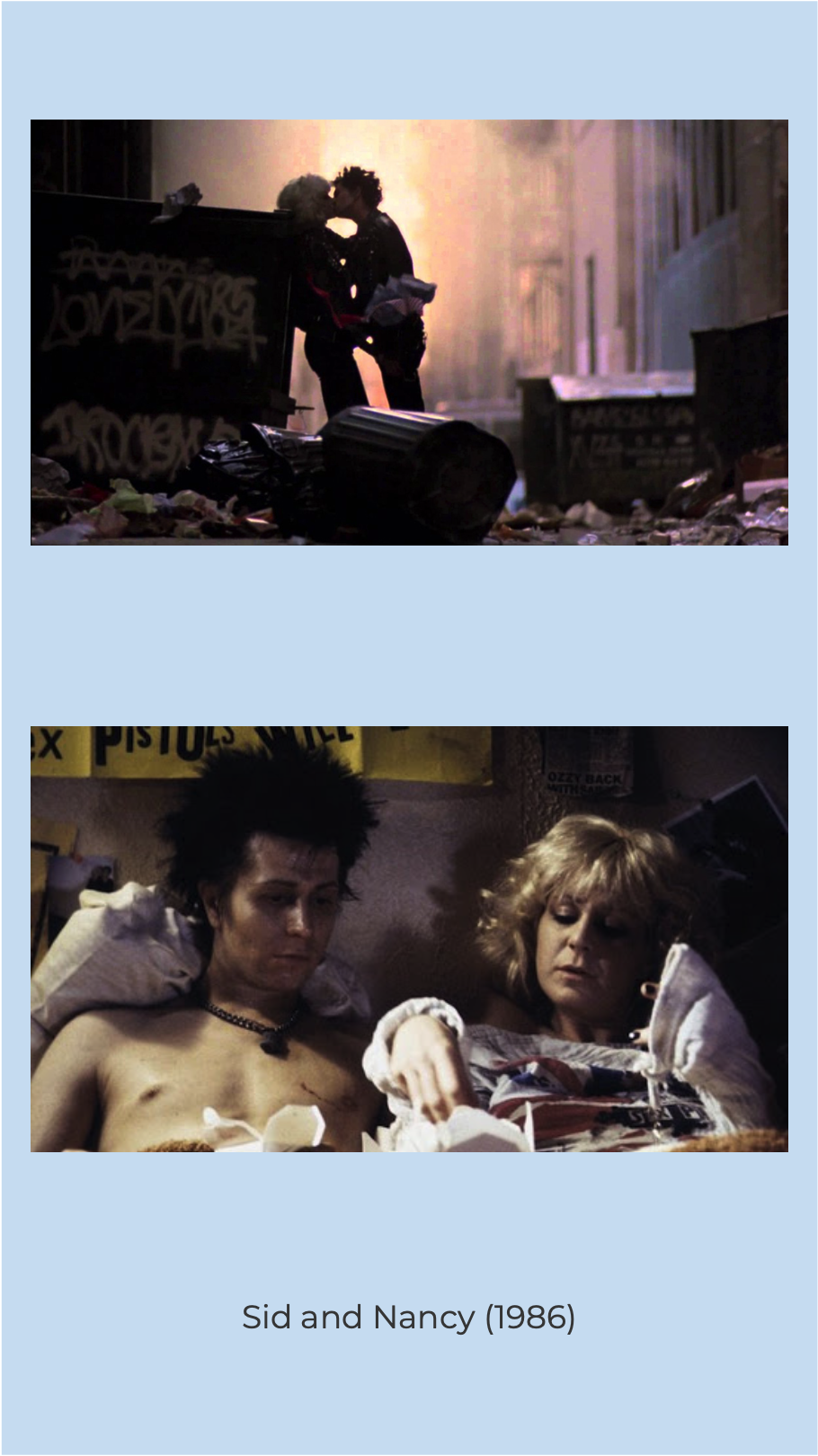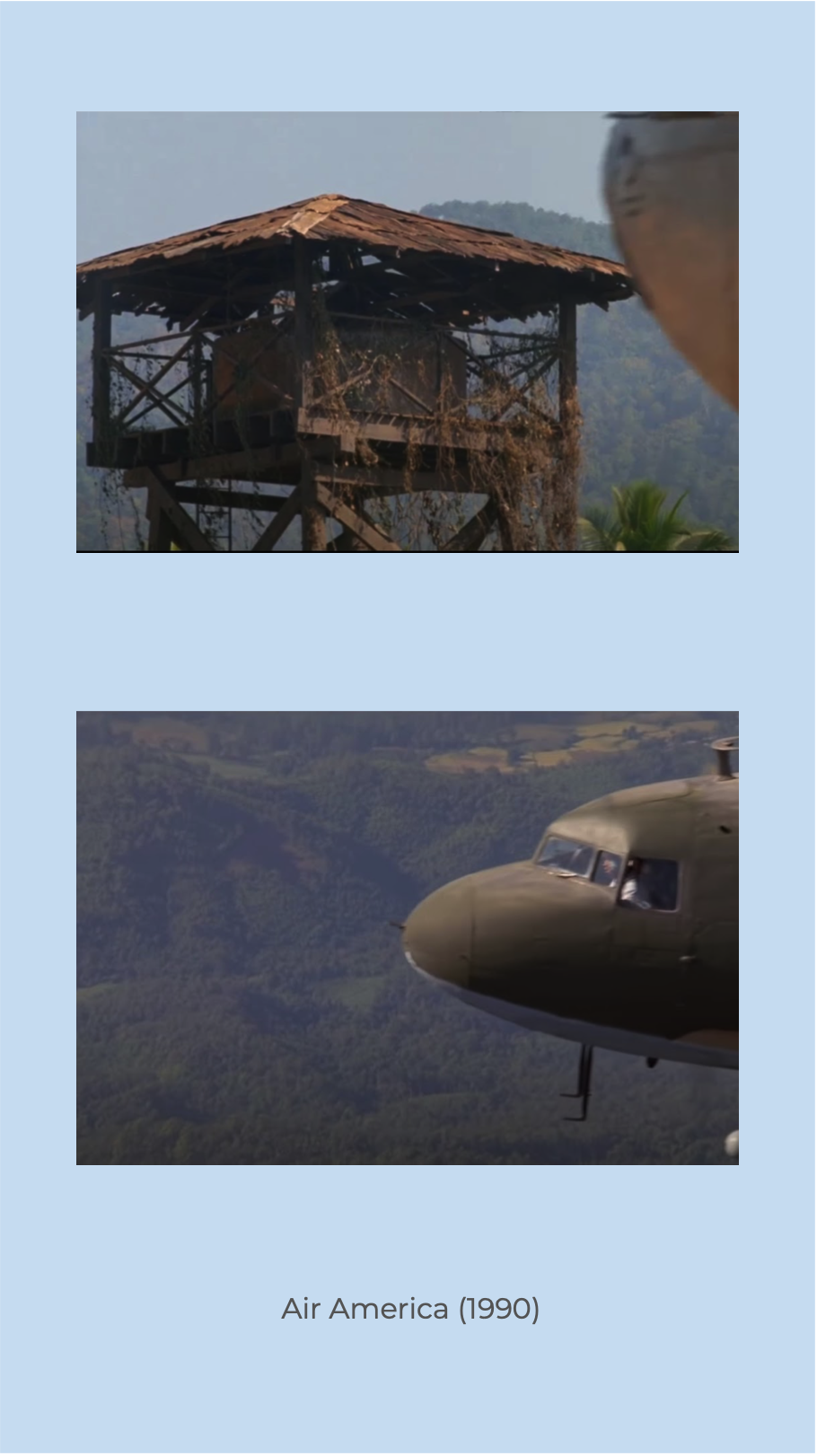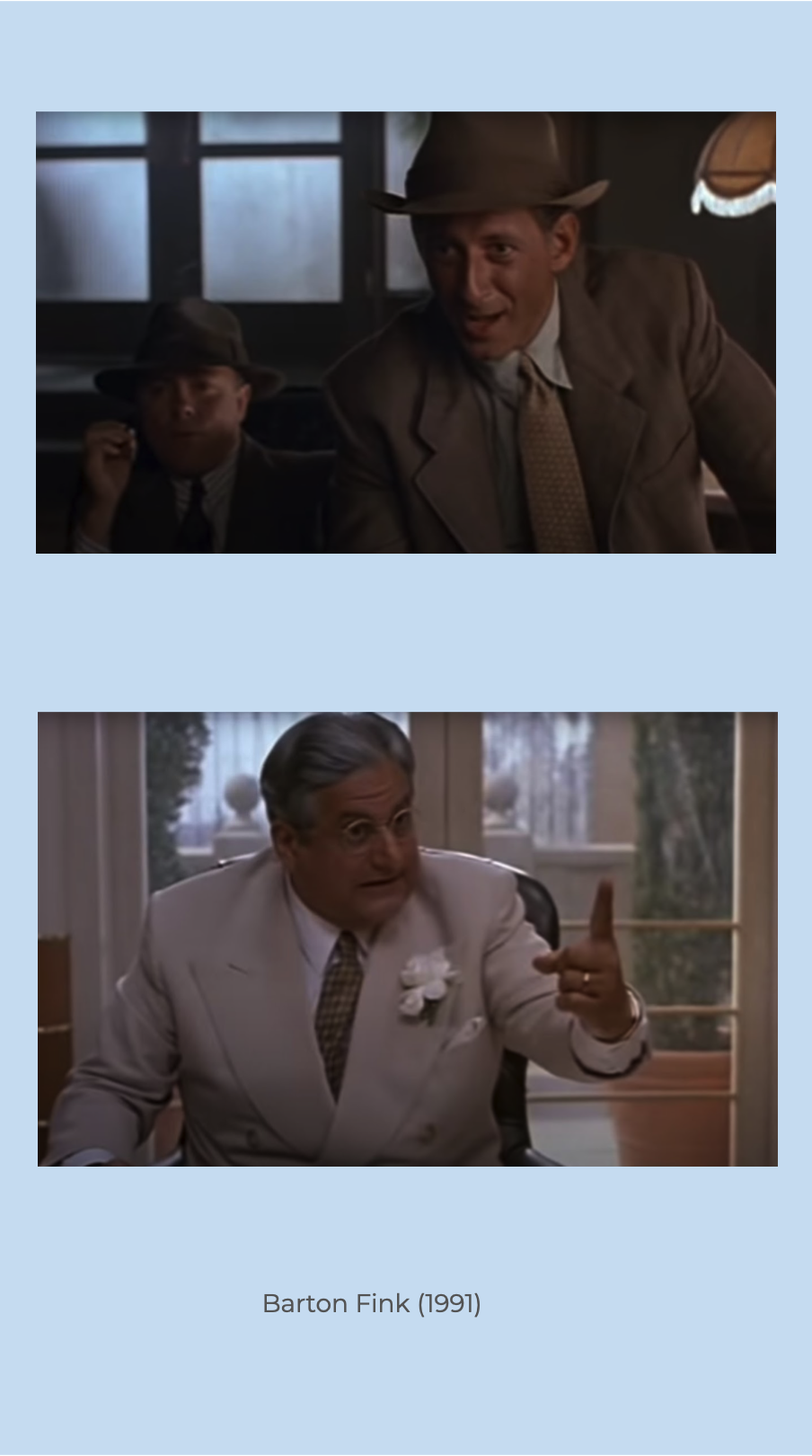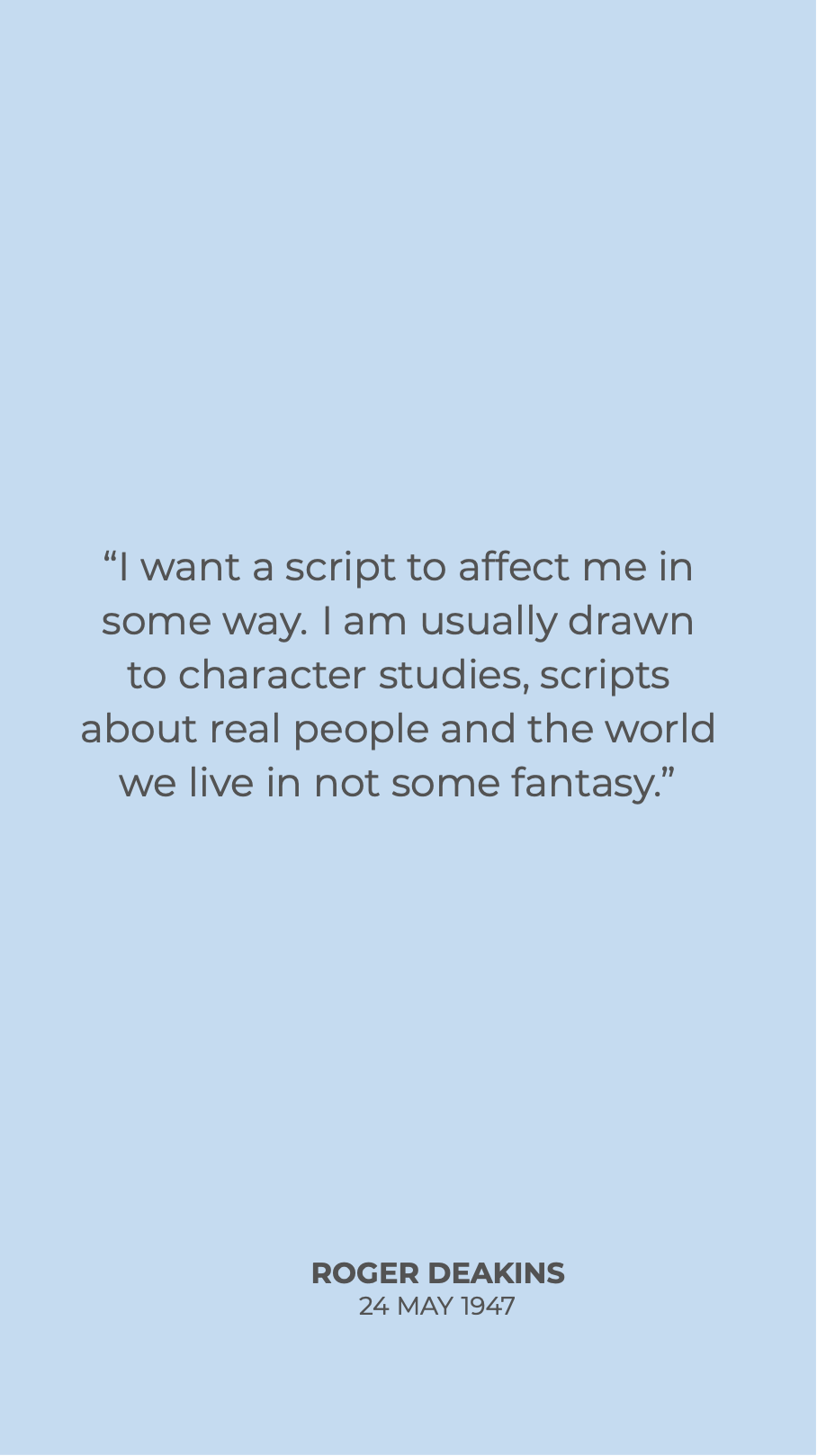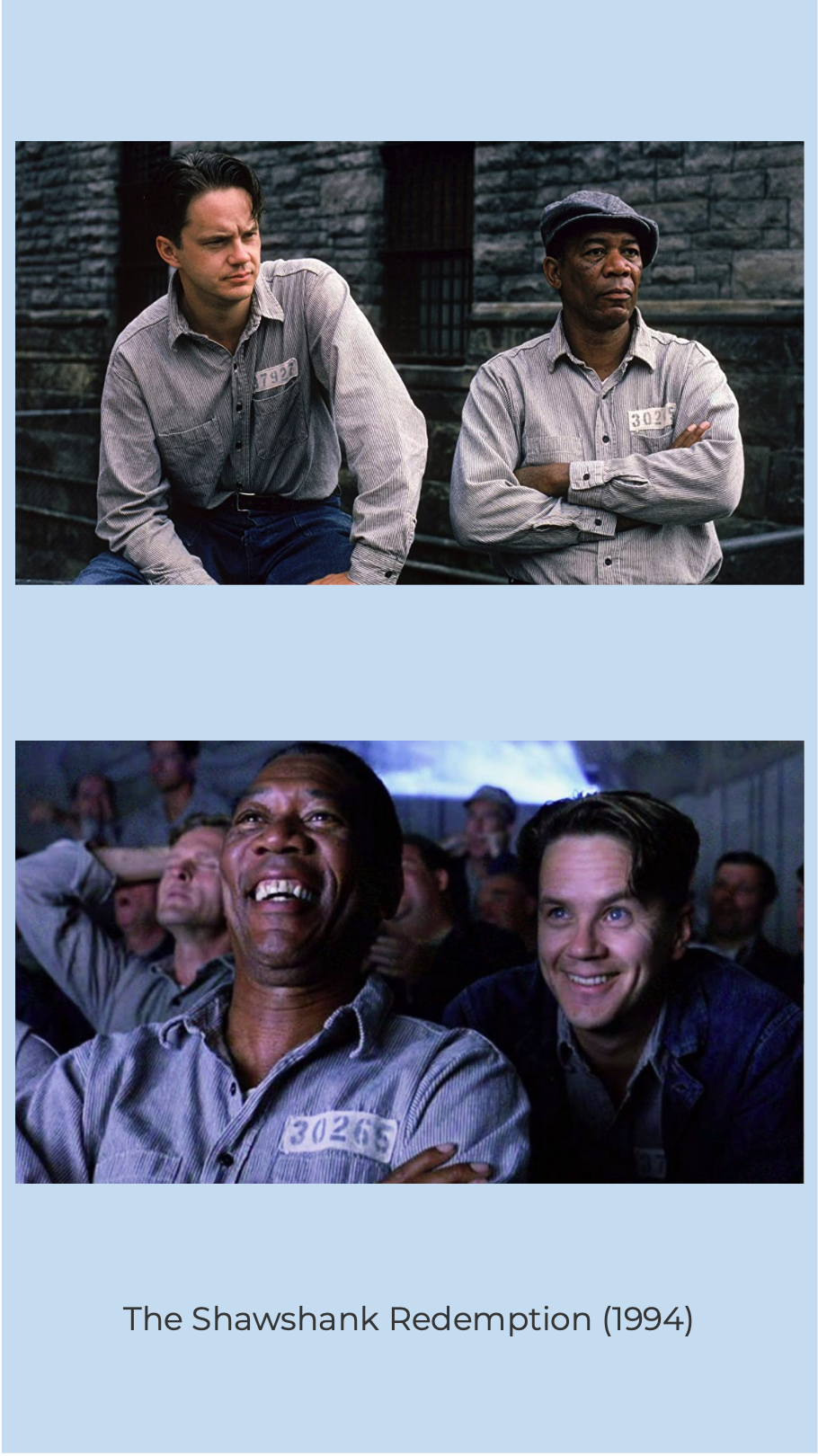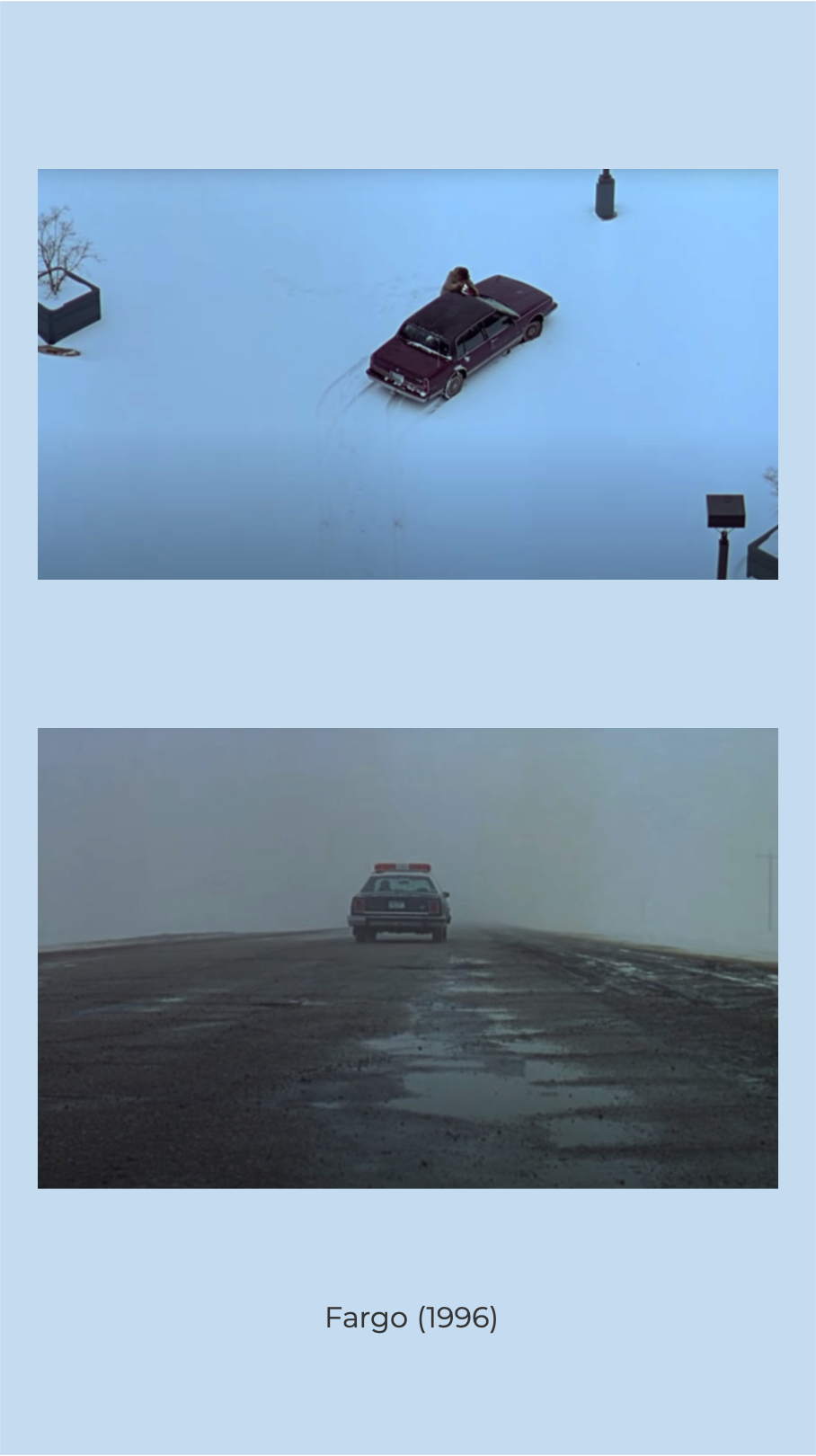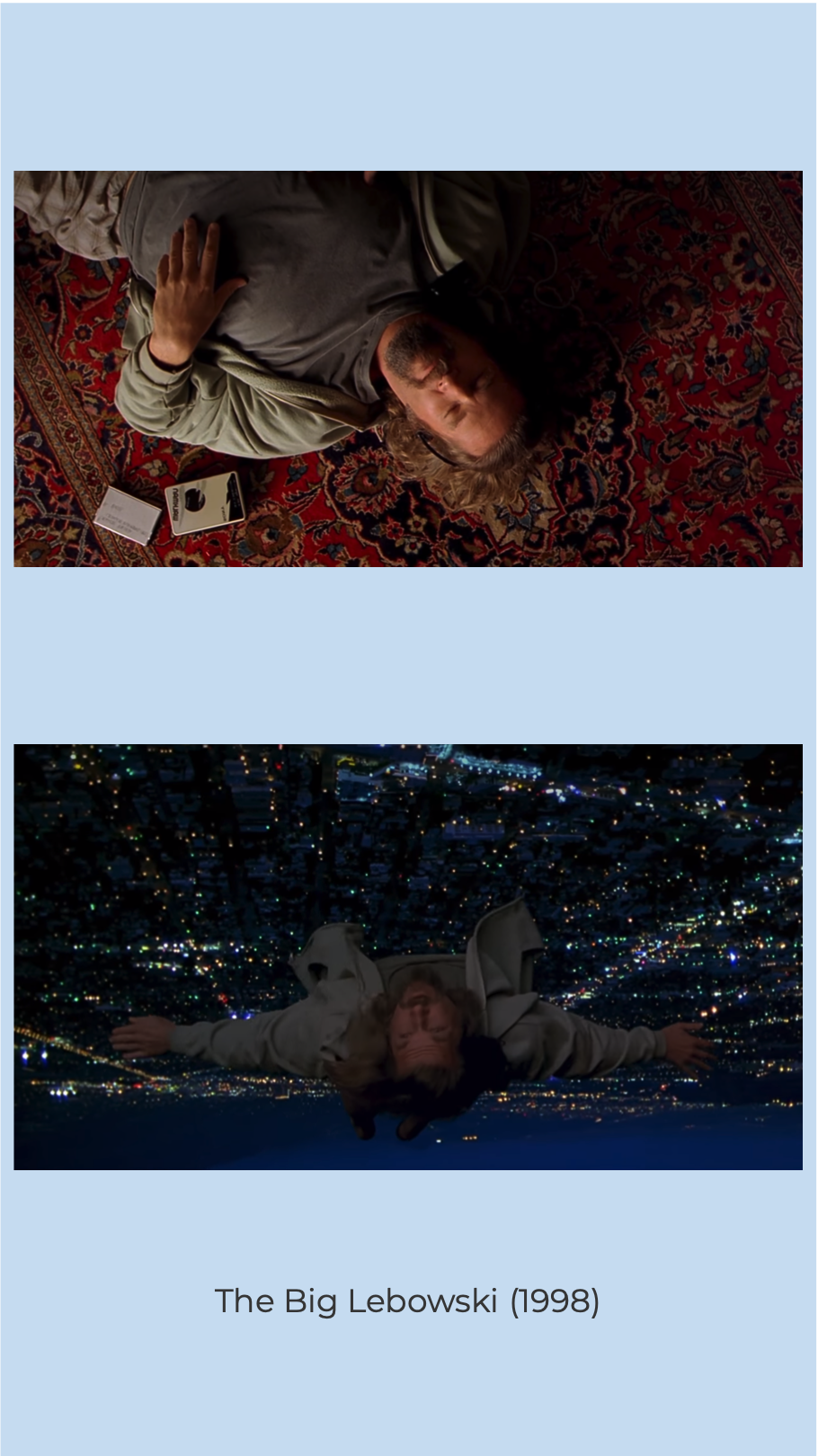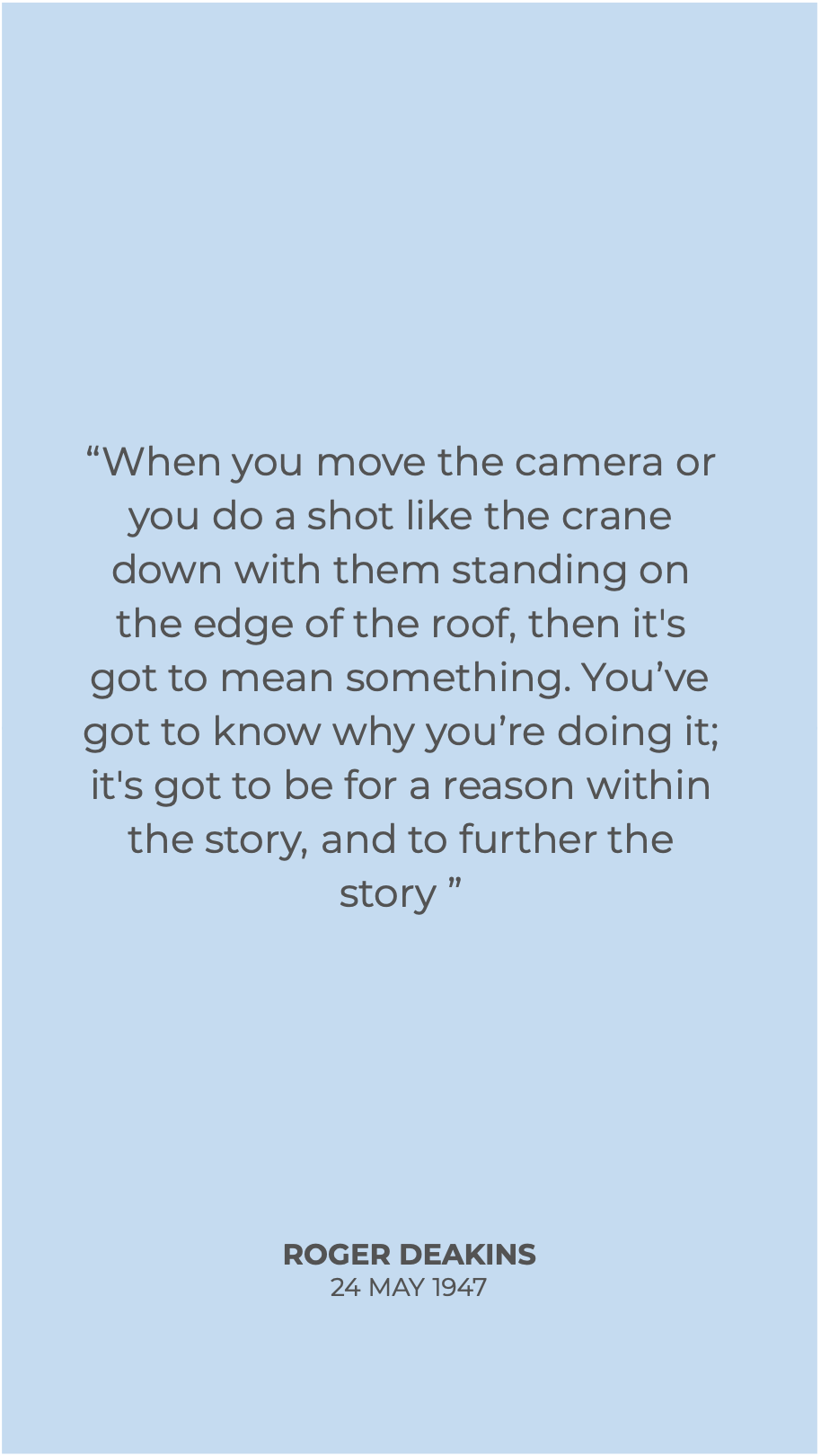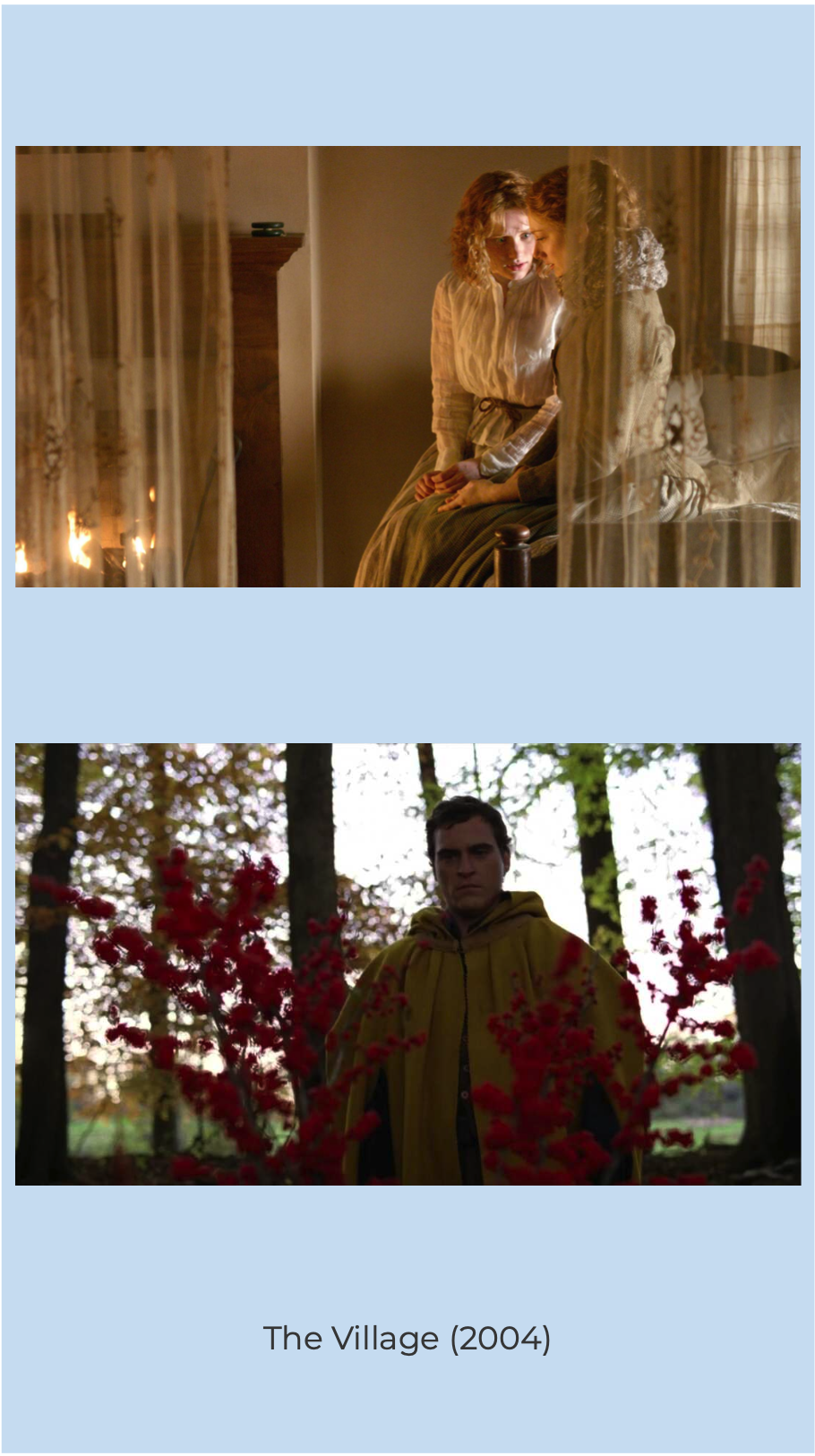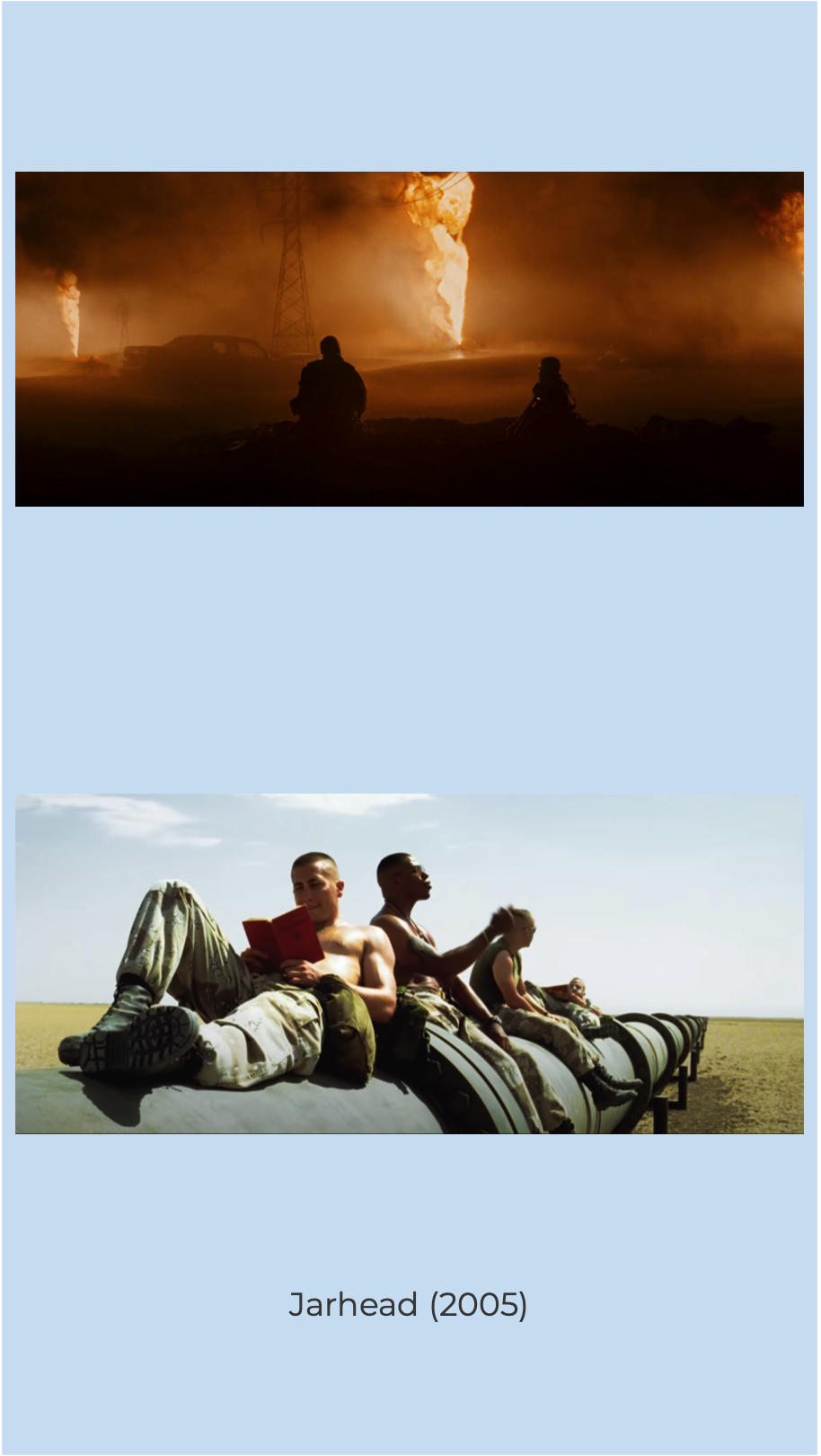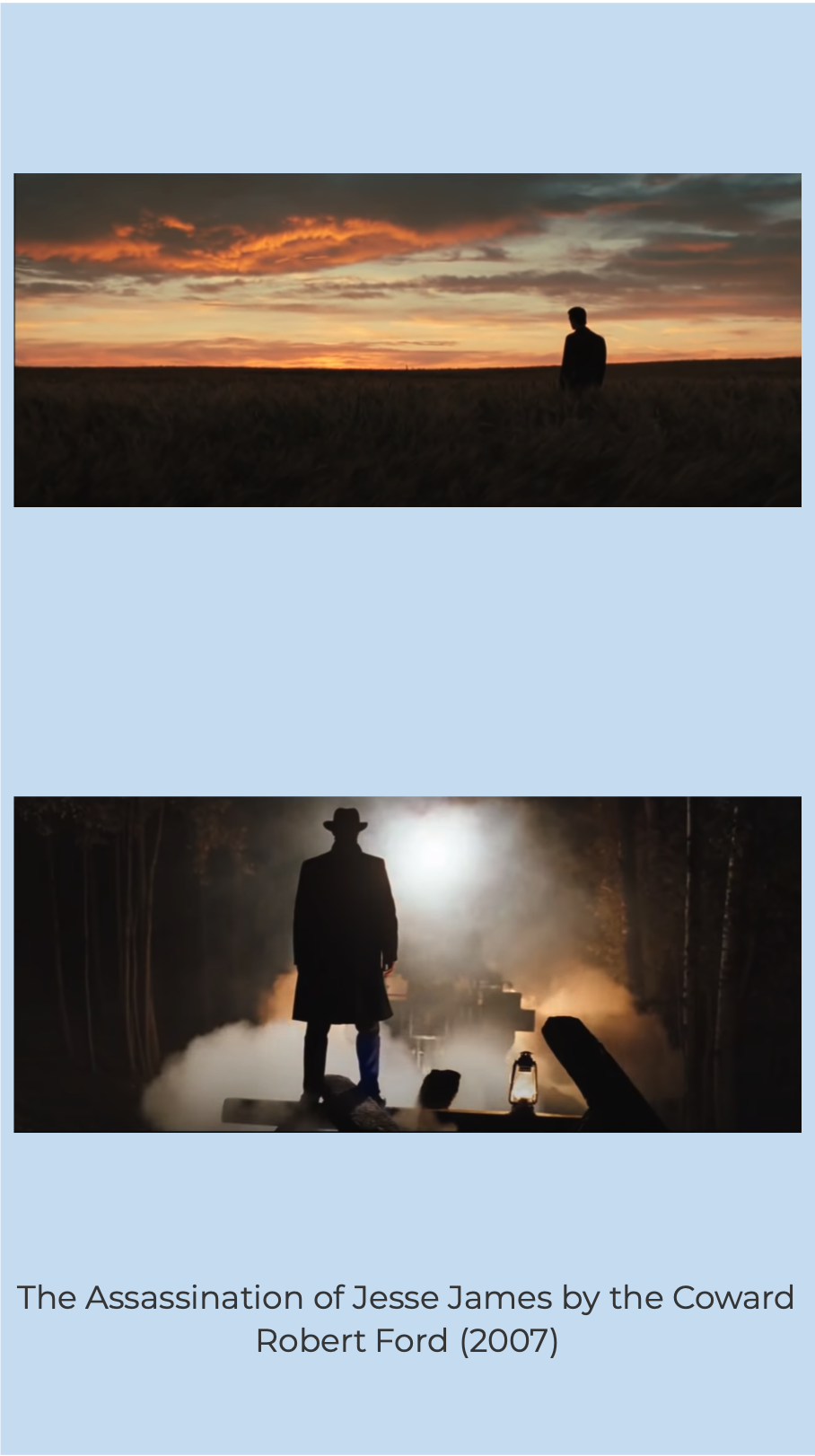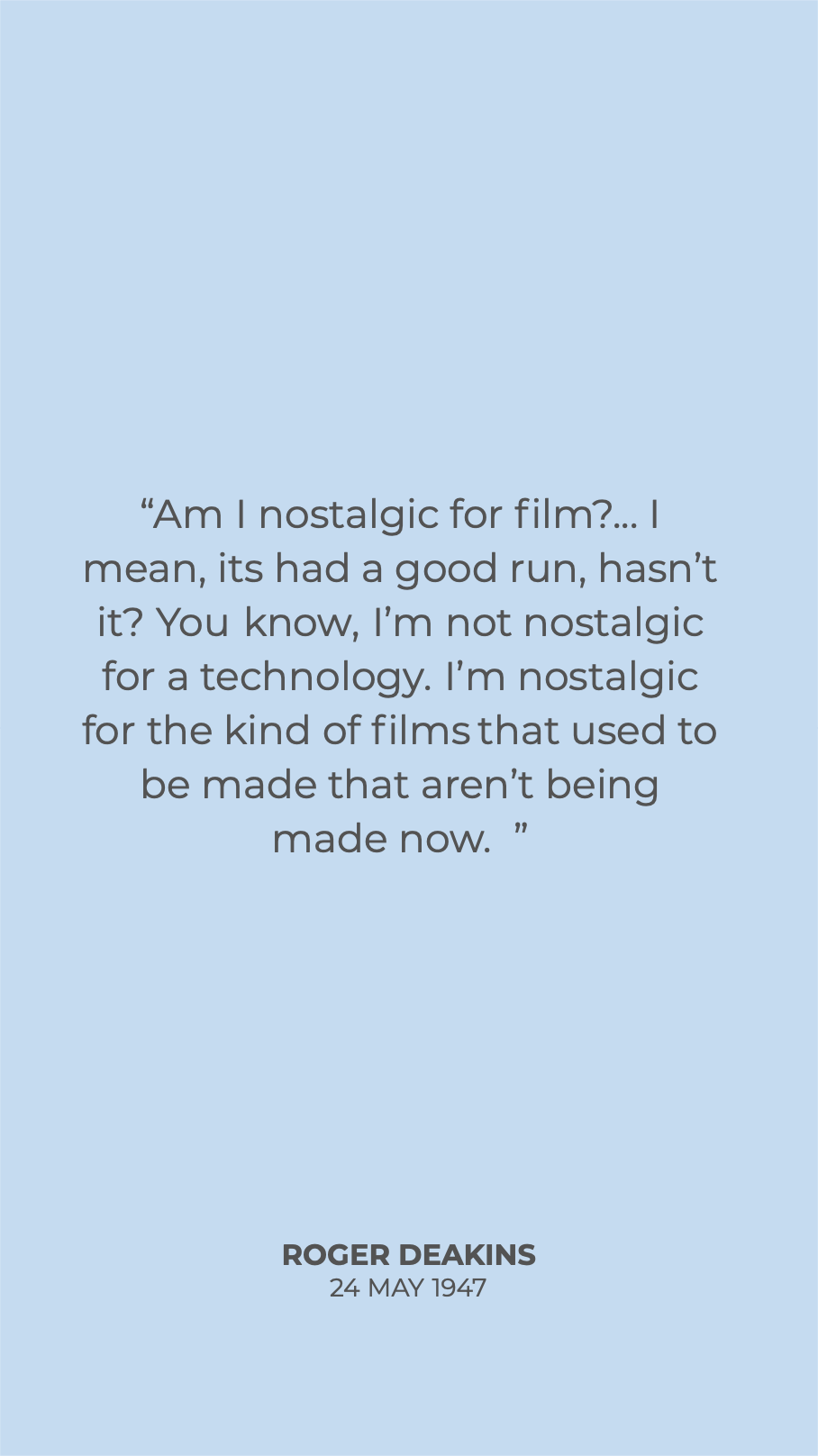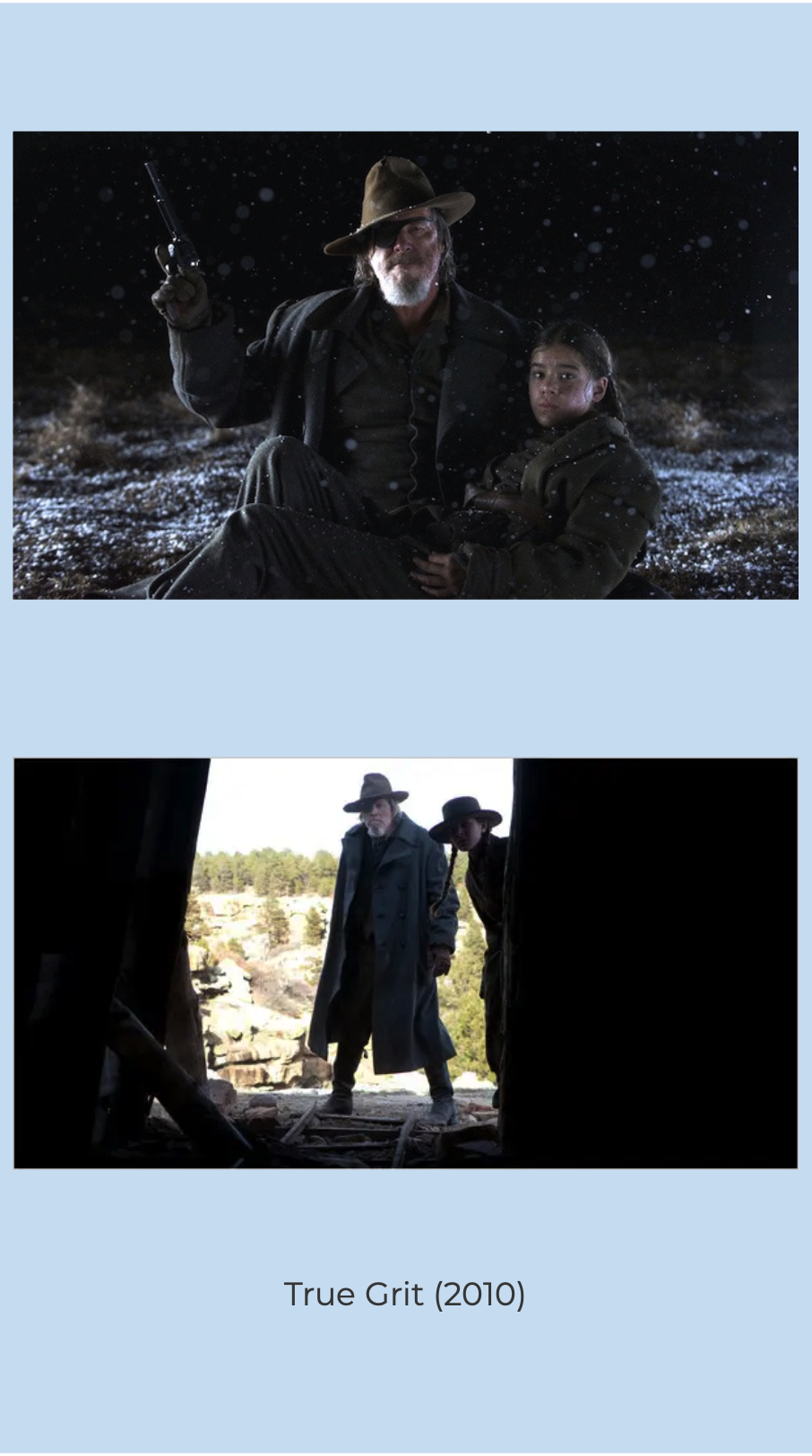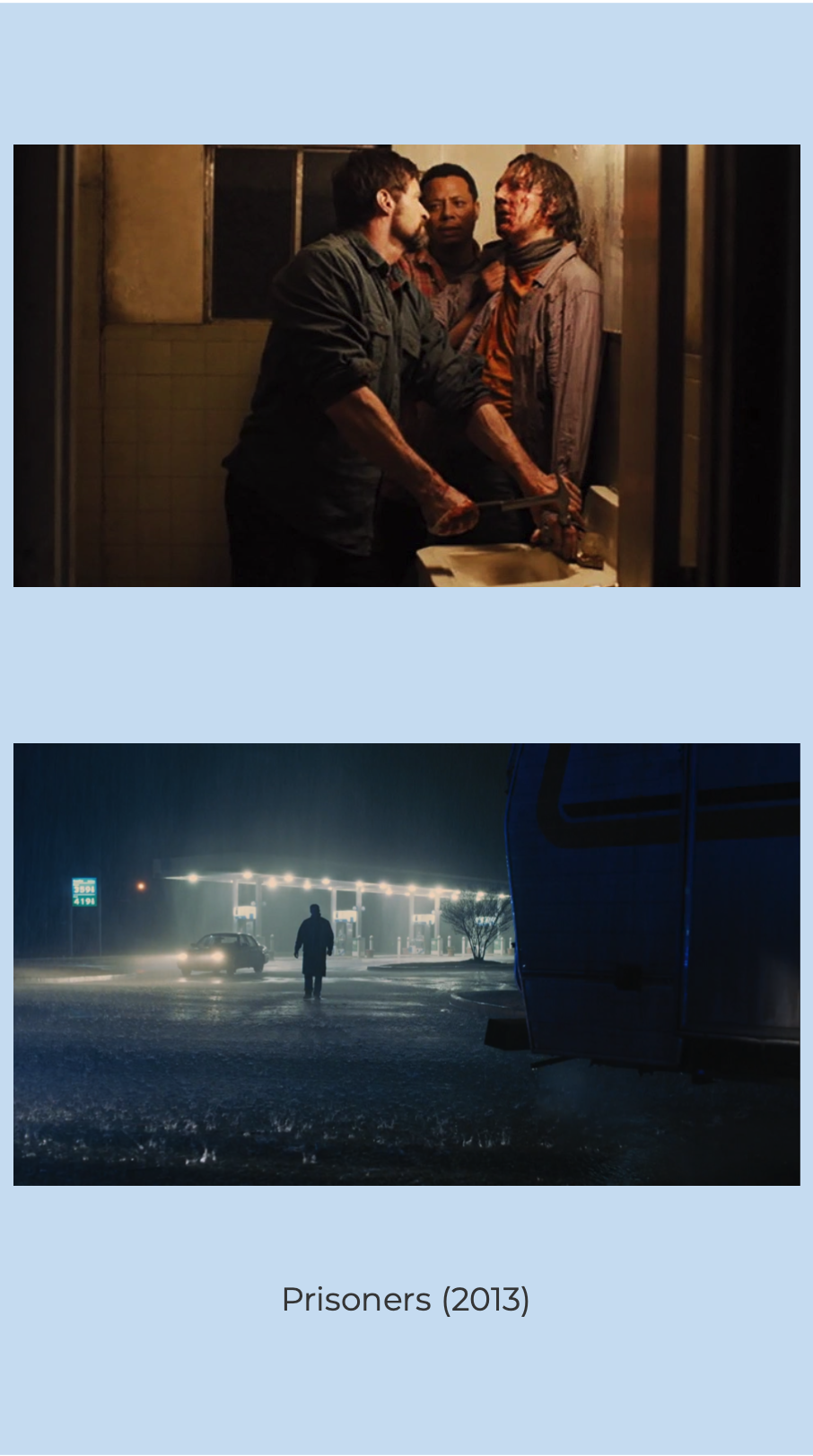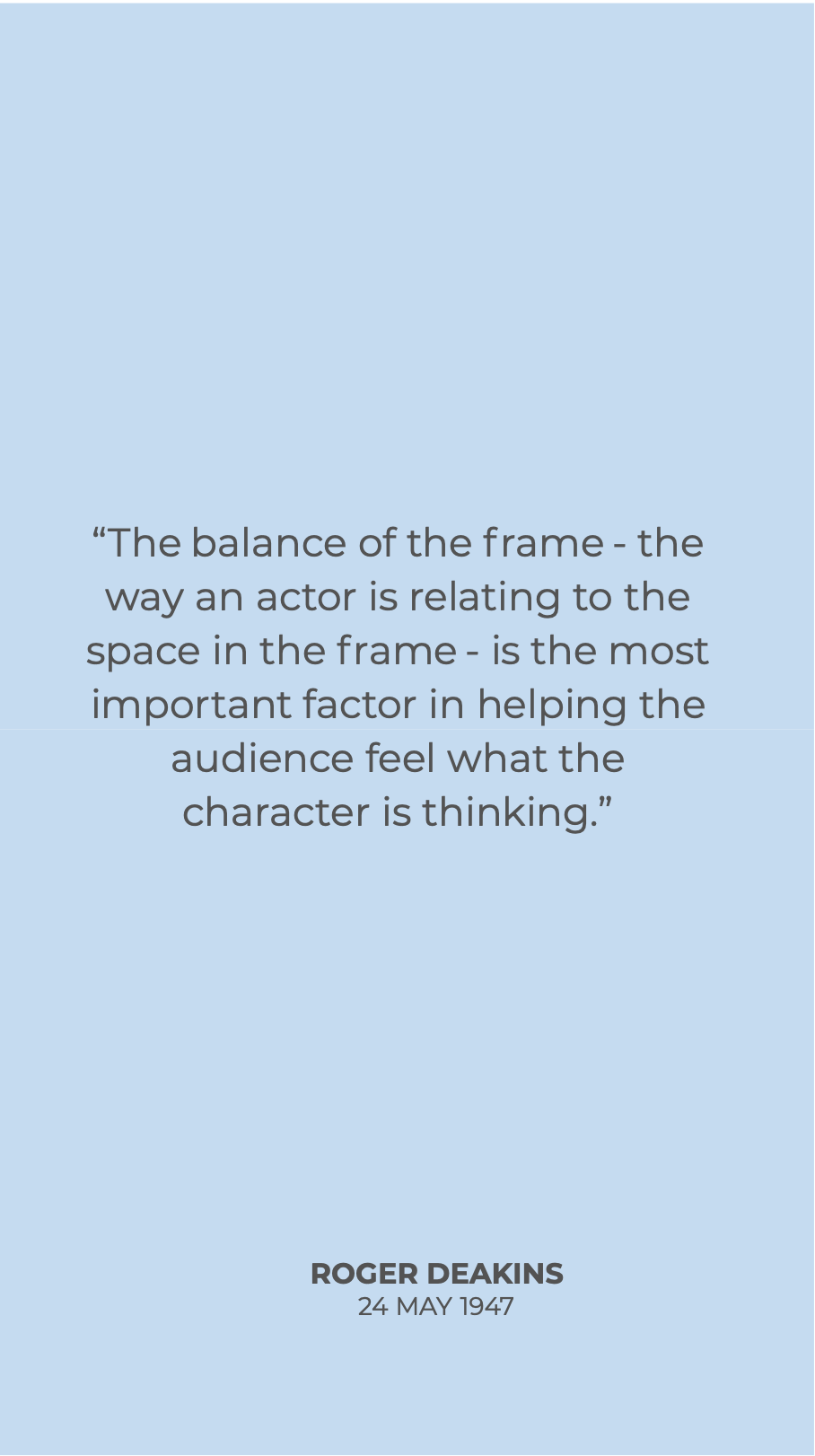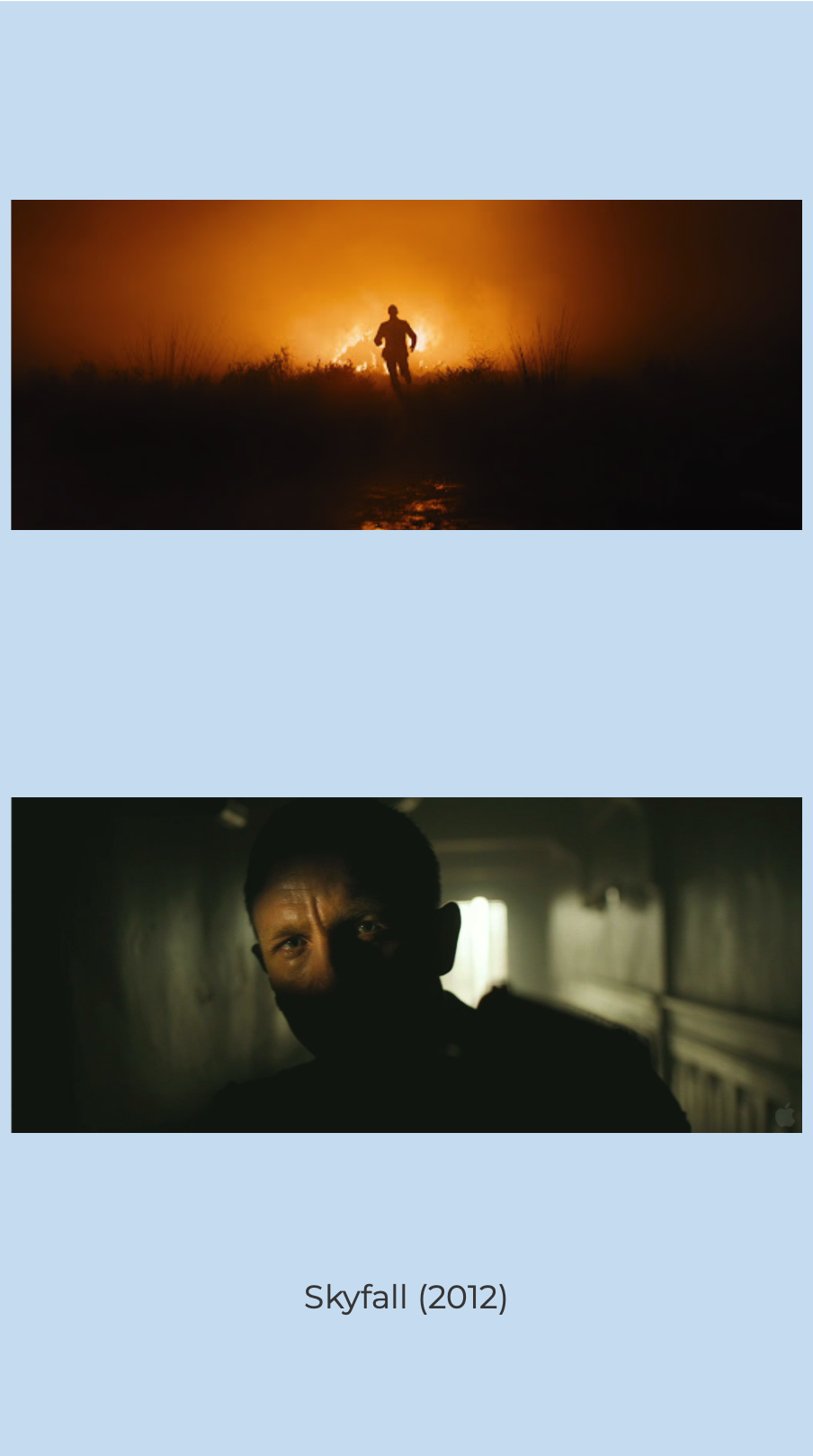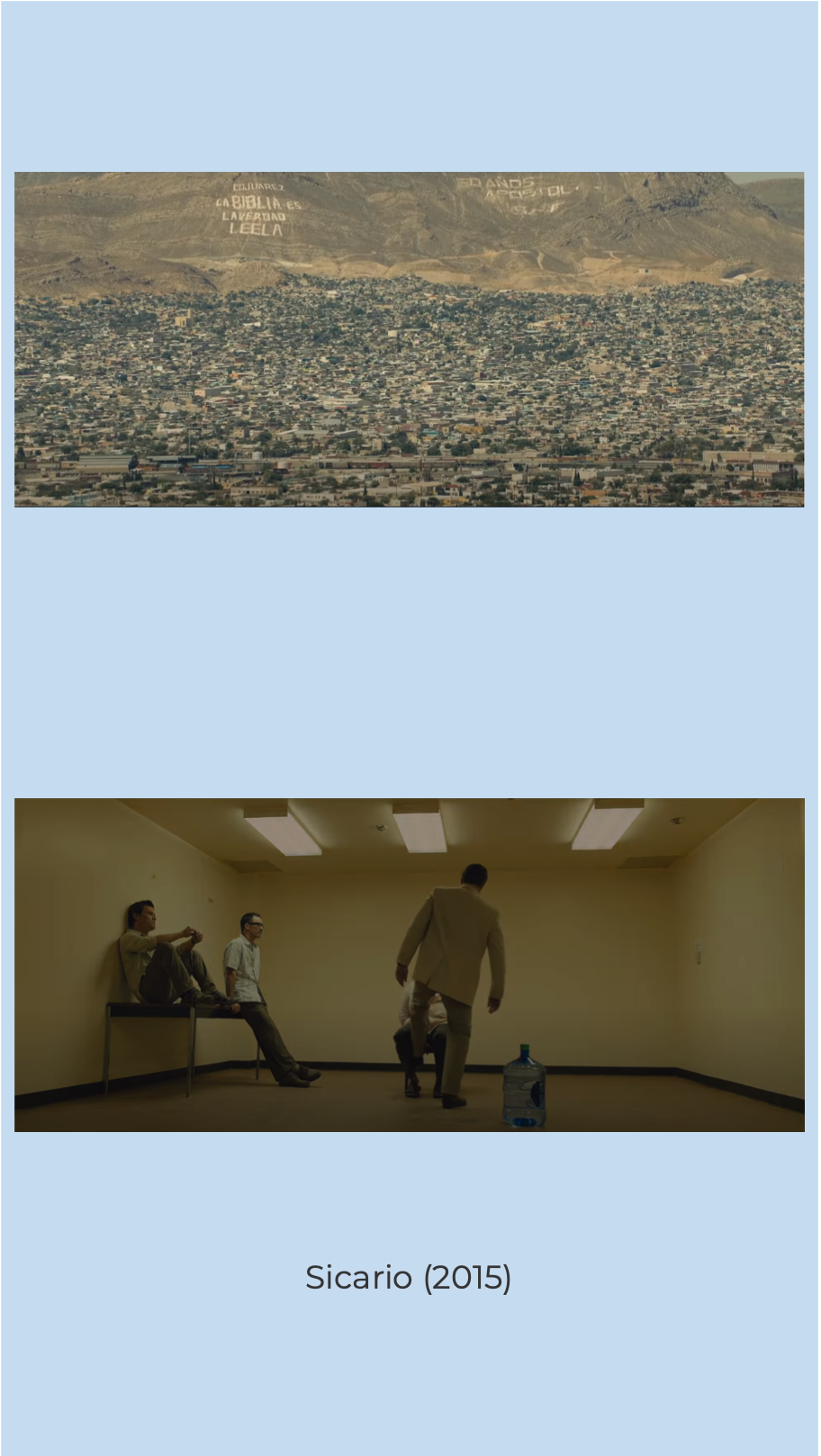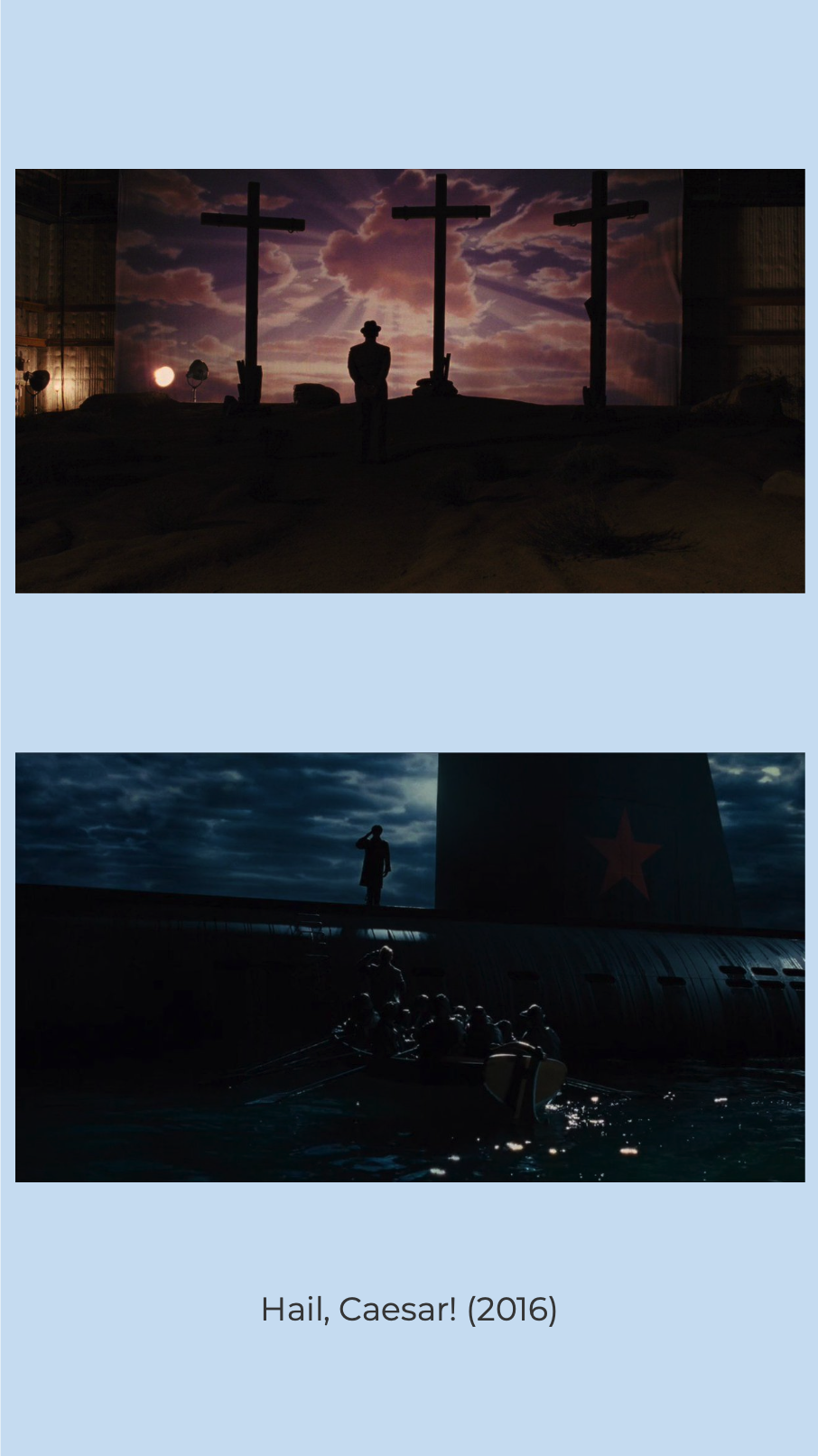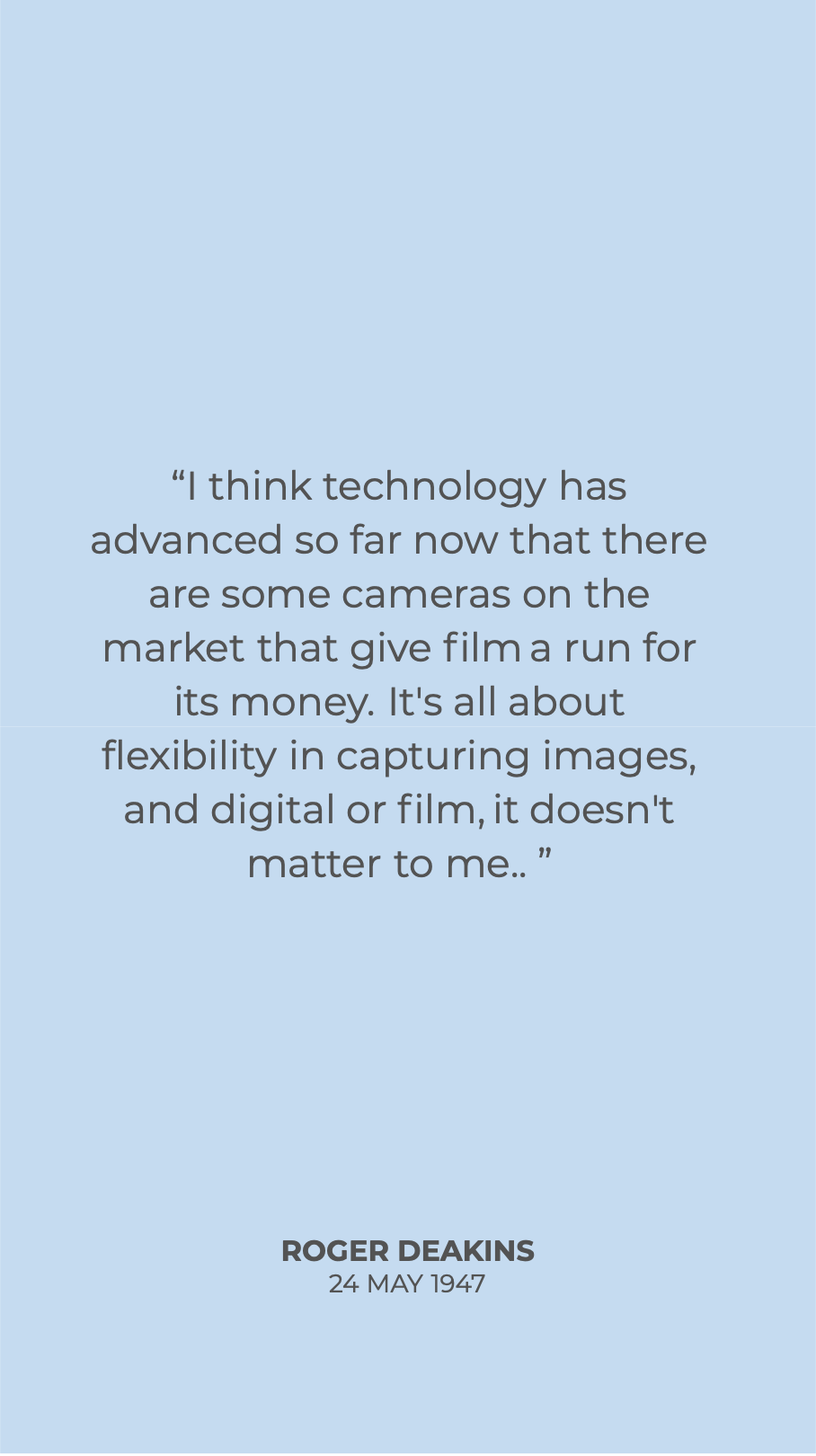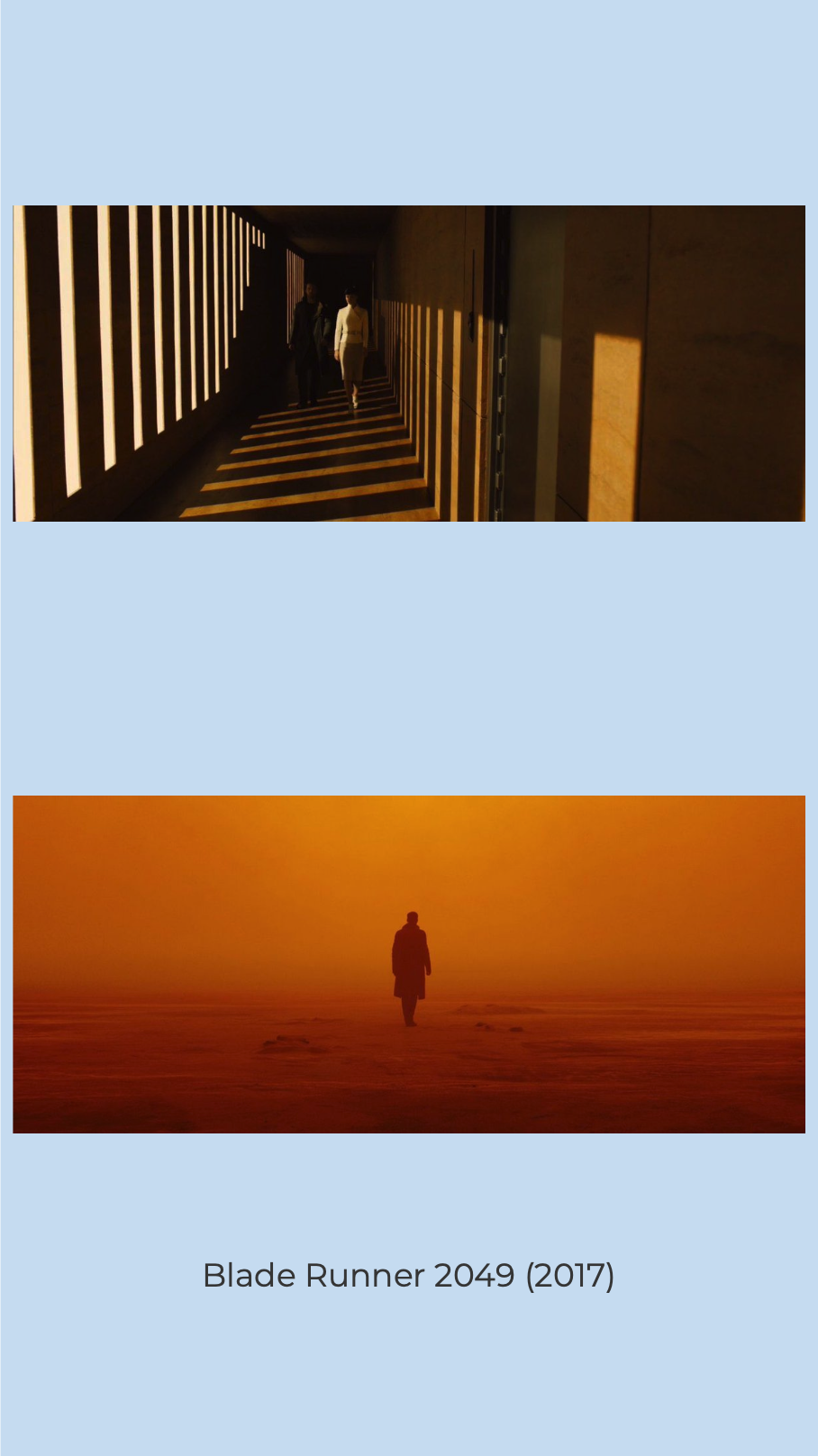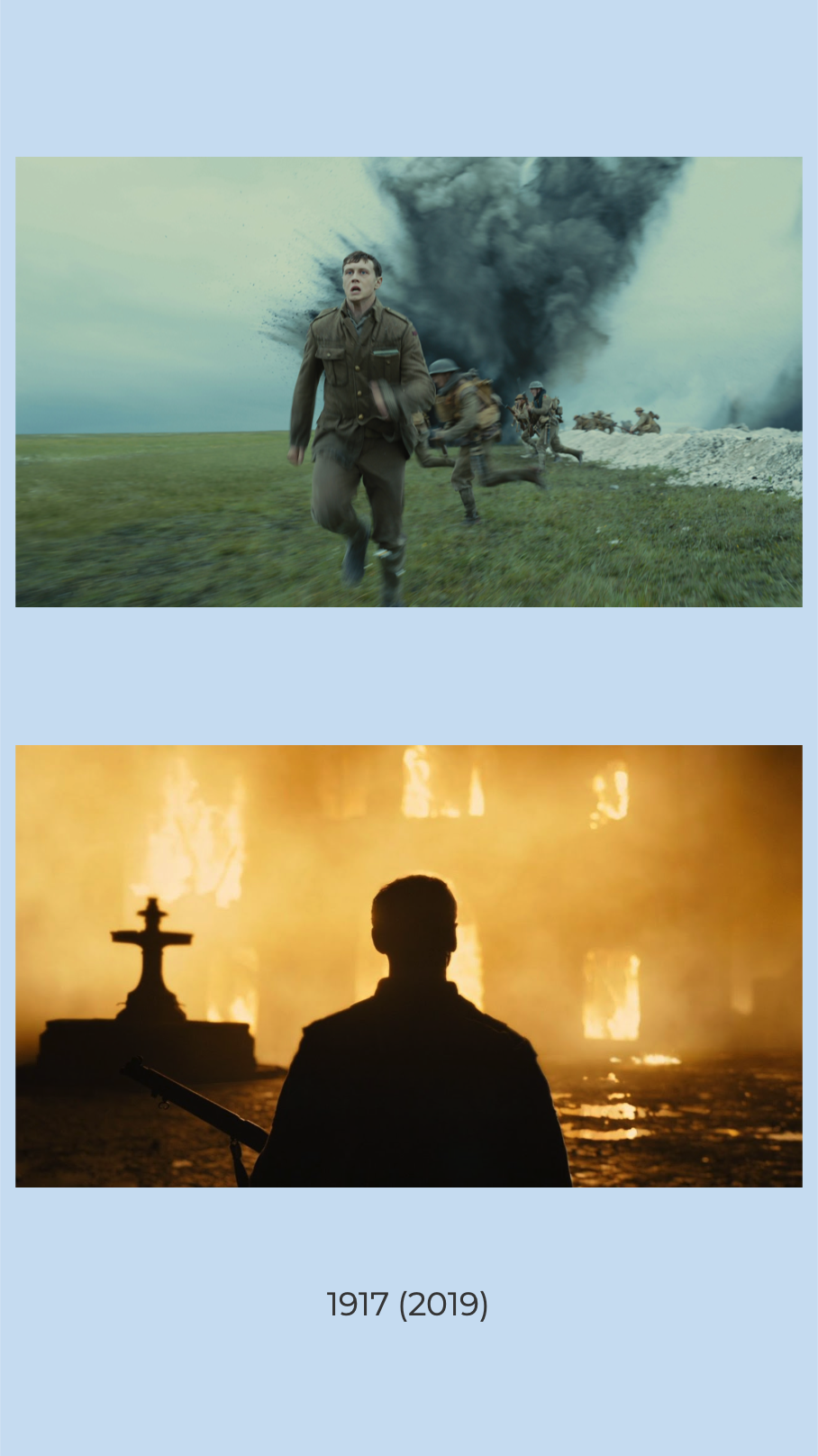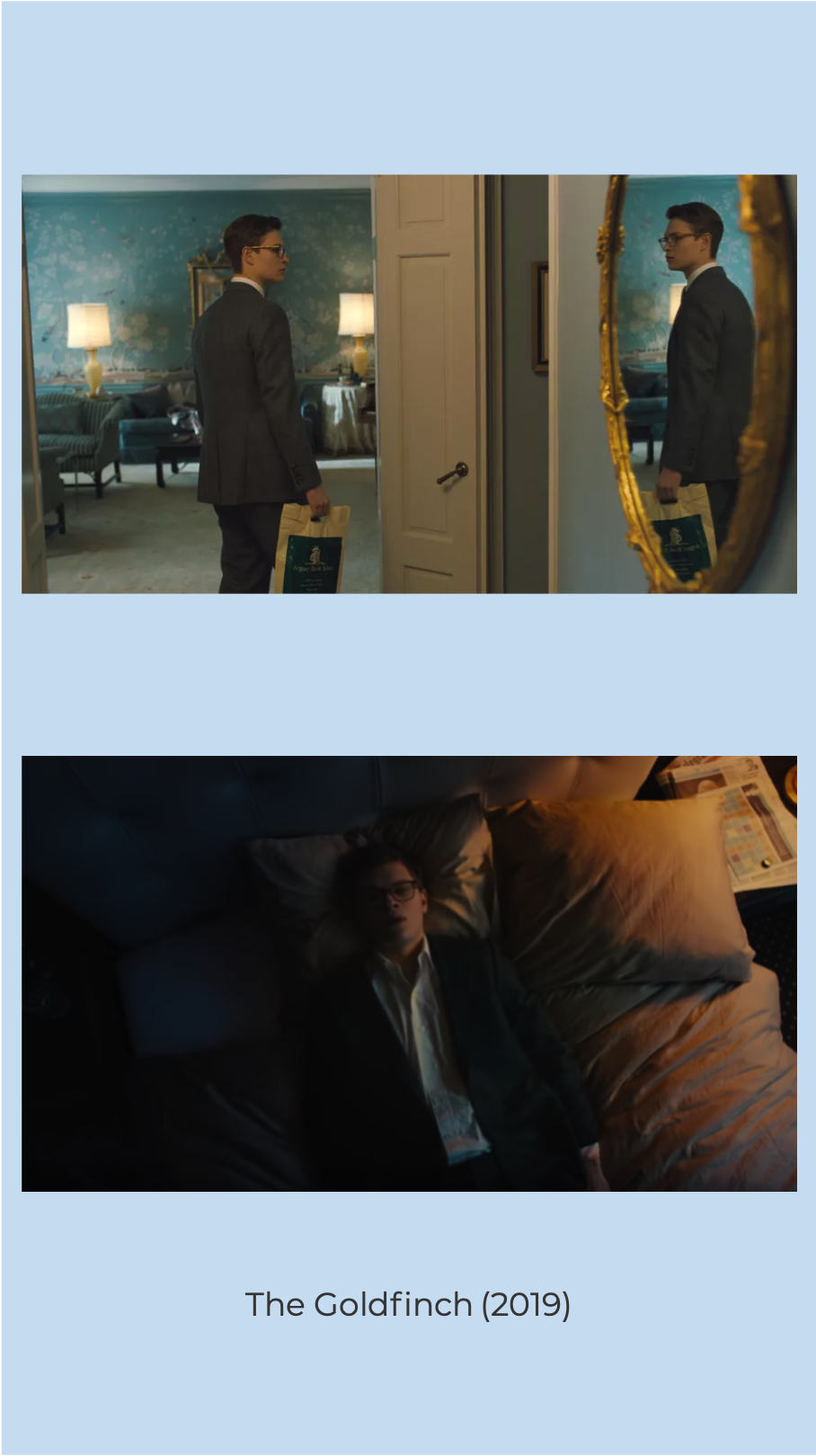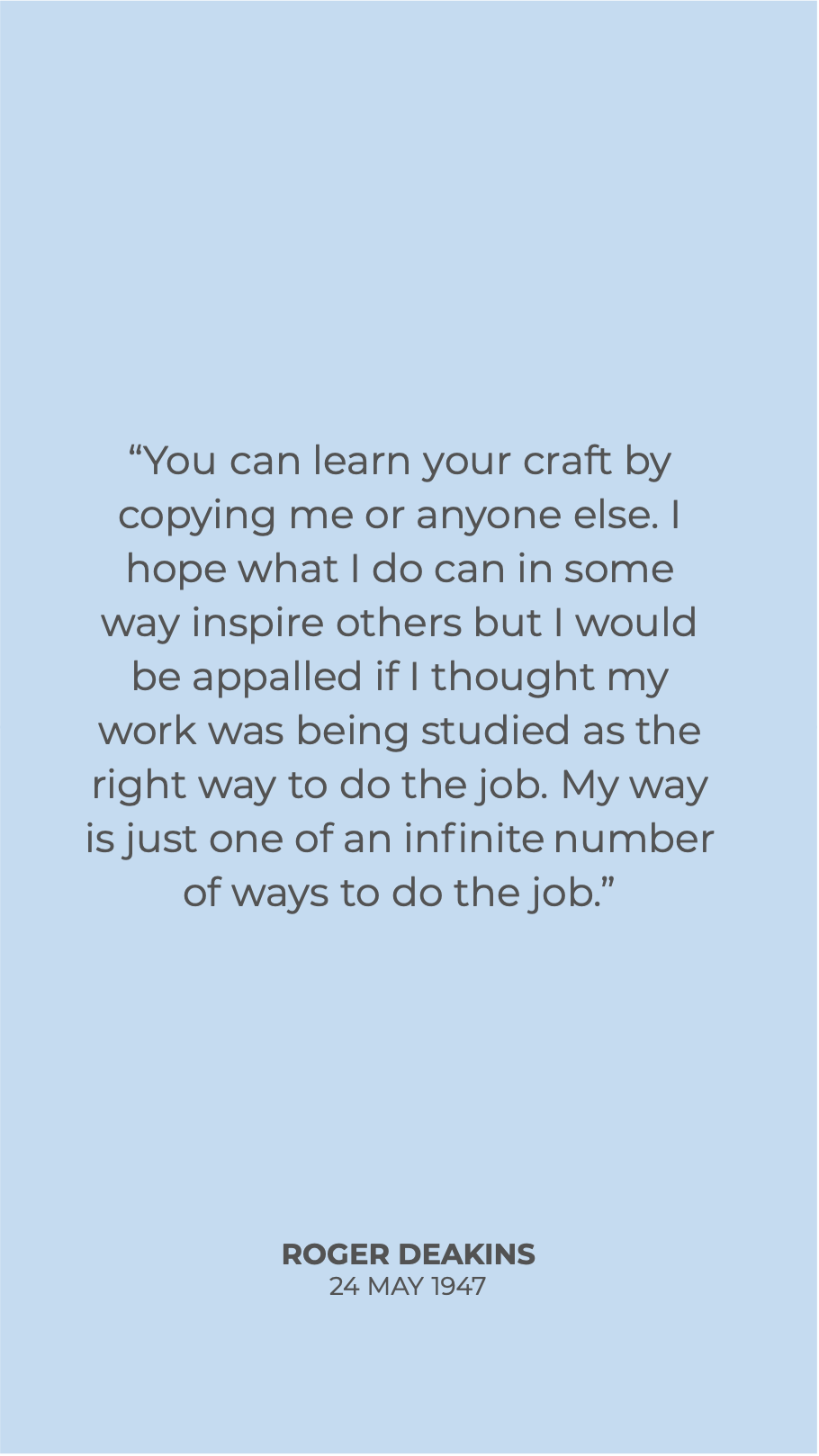“If you shoot with a billion cameras, then there’s no perspective. You want to use one shot at a time, so it’s better to discover what that is before you shoot, rather than trying to make something in the cutting room, and then it just becomes generic.”
ABOUT ROGER DEAKINS
Roger Deakins was born in Torquay, England, in 1942. He is an English cinematographer best known for his work on the films of the Coen brothers, Sam Mendes, and Denis Villeneuve.
A Talented painter and photographer from youth. Deakins enrolled in the National Film School of England in 1972. On graduation his interest tended towards documentary. In 1978 he began work on his first major project, Around the world with Ridgeway.
He is a member of both the American and British Society of Cinematographers.
Deakins' first feature film in America as cinematographer was Mountains of the Moon (1990). He began his collaboration with the Coen brothers in 1991 on the film Barton Fink. He received his first major award from the American Society of Cinematographers for his outstanding achievement in cinematography for the internationally praised major motion picture The Shawshank Redemption (1994).
He is also known for his work in The Assassination of Jesse James by the Coward Robert Ford (2007), No Country for Old Men (2007), True Grit (2010), Skyfall (2012), Sicario (2015), and Blade Runner 2049 (2017).
Deakins also worked as one of the visual consultants for Pixar's animated feature WALL-E and How to train your dragon.
Deakins had been nominated for 14 Oscars however in 2018 he won his first Oscar for best cinematographer for the movie Blade Runner 2049, followed by an Oscar in 2020 for the movie 1917.
WHAT WE HAVE LEARNT FROM HIS JOURNEY
Every artist has an individual style which over a period get associated to the artist. Roger Deakins is one of the many amazing cinematographers of our time he might not have a consistent method for every film he does, but he consistently produces amazing films. After studying his work journey we have found a few key points which are essential for any production.
Roger Deakins as a cinematographer has worked on old film to new age digital technology. When asked what he prefers he mentions that the medium is not the most important, rather knowing what you want from a shot is most crucial. As said by him in a recent interview, “Film is not inherent to actual celluloid but it is the idea that everyone is working towards that moment, that special moment when everything comes together you know the performance, the staging, the camera, the lighting, the effects everything has to be focused on on little piece of film, its that moment in time.” Digital has given us a lot of freedom for example the film shot by Roger Deakins, 1917 would not have been possible to shoot the way it was without digital technology. “Am I nostalgic for film?... I mean, its had a good run, hasn’t it? You know, I’m not nostalgic for a technology. I’m nostalgic for the kind of films that used to be made that aren’t being made now.”
In another interview he talks about the future of digital cinematography film and says, “In the long term I have worked quite a bit in animation over the years and I think animation and what was live action has merged, I really do. I think there will be less and less live action. Live action will be more the kind of smaller low budget films but most main stream Hollywood films will be done in a computer very soon actually in around 10 - 20 years.”
When asked is there a particular formula that he uses for his films Roger Deakins replied, ”I think there is a danger now that people think that there is some sort of magic trick that you can learn, that somebody will tell you what to do and suddenly I’ll be a cinematographer, well no, it’s not going to happen”. He also says, “Filmmakers and some directors work as though it’s a mathematical formula and I always remember what John Huston says, that you shoot with your gut not with your head and I really believe that.”
In a different interview when asked what advise would he share with artists who want to be cinematographers he says, “Going to film school made a big difference to my life and I think shooting documentaries and stills as well gives you a sense of how you see things really, how you relate to what is in front of you that’s really important you can't copy somebody else. You have got to find it yourself really, with your director as every film is different and it is not about copying anybody else.”
CAC POV: We also truly believe that there are a few key principles in all forms of art and once you have mastered the key principles then it is time to create your own formulas using your individual style, a great example of this would be Picasso.
Roger Deakins talks about how important it is for there to be prep done for all his films, some maybe more than others. His film 1917 was one film where the prep was the key element of achieving the final result. The film looks like it has been captured in one continuous shot however that wasn’t exactly the case, in order for the film to be shot that way the crew required even more preparation than the average movie, for example the crew built models for every single set. With the movie 1917 Roger Deakins brought forward a new style of shooting which eventually was a great successes and he has set an amazing bench mark for future movies.
CAC POV: We understand the importance of prep as every production small or big needs to be laid out with all details so that when the time of shooting comes we can focus on the details and the vision is set which gives us the result we desire or even better. That being said things go wrong even if the pre production is done to the T, in such time only experience will help which is why the basic fundamentals need to be very strong.
To end this blog we would like say Roger Deakins ability to push the boundaries with natural and simplicity work even with the access to today technology is amazing. Below we have summarised all his films in images so you can have a look for yourself.



